#miss fisher australia tour
Explore tagged Tumblr posts
Text











I have fallen in love with Miss Fisher's Murder Mysteries (specifically Phryne and Jack) and I love seeing a picture of a country and a time that is very unfamiliar to this American--it is truly a study in sociology and anthropology. For instance, I had no clue communism and socialism were so popular in Australia after the First World War.
But of course, the writer in me is drawn first and foremost to the dialogue. Sparkling and dynamic--a success attributed to the writers and the actors delivering the lines--it is a true tour de force! I'm sad I hadn't heard about this show earlier.
To celebrate such delicious dialogue and striking ripostes, I've created a top ten list of my favorites!
But my number one favorite riposte from Miss Fisher's Murder Mysteries? "If a tree falls in the forest...." "You are very likely somewhere close by wielding the axe!" 😂 Its delivery is so delicious, but the words in the exchange are what truly delight my writer soul.
Why? It links back to a presentation by Karen Witemeyer to my ACFW chapter on writing deep point of view. She encouraged us to circumvent clichés by personalizing them for the character rather than writing them as they're known. EX: "It was hot enough to melt butter." became for my latest character (an Army CID officer) something like "... to melt an MRE in a Humvee on the streets of Basra".
This tweaking of the forest-falling tree adage follows exactly that directive. Twisting the old saying into something new, snappy, and completely reflecting each character's personality (both the speaker's and the hearer's).
Bravo to the writers for the masterclass example! And yes, I geek out on writing craft. 😂🤓
#phryne x jack#phryne fisher#jack robinson#miss fisher's murder mysteries#miss fisher and the crypt of tears#mfmm#quotes#tv quotes#greatwriting
32 notes
·
View notes
Text
Days 67-68 – Sunday-Monday, 30-31 July
Sunday
We were woken a little before 5am by the call to prayer blasted from the Hagia Sophia mosque a hundred metres outside our window – I remember that from last time too. It happens five times a day, every day, unless their PA system breaks down. Fortuitously, I think that happened tomorrow – it sounded as if they were doing sound checks after the morning prayers and when the lunchtime call was due, we could hear it from other mosques, but not Hagia Sophia. But they only missed half a day and it was soon shaking the foundations again. We thought they must be broadcasting a recording, but we later saw a couple of imams standing on the balcony an bellowing into a microphone. It is a very strange call with seemingly impromptu elaborate 'tunes' incorporated into the call.
We had breakfast up on the rooftop with the Gulls and Crows flying all around, landing on the balustrade and looking for an opportunity to steal someone’s breakfast. Not today, but I recall people losing their breakfast to the gulls last time and I am sure it is a regular source of food for these determined birds.
We had a bit of a rest after breakfast before going out just before noon to follow the tram tracks down to the Bosphorus. We had lunch at one of the restaurants on the Galata Bridge and watched hundreds of tiny fish being caught by the hundreds of fisher-people on the bridge above us. The biggest fish we saw caught was about eight or ten centimetres long, and nothing was thrown back in, so I imagine whitebait is on the menu for a lot of locals tonight.
We walked through the Spice Market, operating there since 1603! There were dozens of stalls selling scores of spices and even more stalls selling even more different forms of sweetcakes, many varieties of baclava, but heaps of other things too. Then there were the jewellers with eye-wateringly brilliant displays of gold, silver and precious stones – no doubt, some may even have been genuine. Aladdin and a dozen other fabulously dressed up creatures were touting for the tourists’ dollars, but we spent very little – just a few sweet things to take back to the room. It was incredibly crowded and I was a bit concerned about pickpockets – my backpack was constantly being touched and we got out of there after half an hour or so.
We walked through the forecourt of the New Mosque that is no longer new - it is still called that and it remains as massive as it was when it was reconstructed as the New Valide Sultan Mosque some 358 years ago – so it is sort of almost new. There are probably thousands of newer mosques in Istanbul today, but habits are hard to break. Heather ventured inside, but taking my shoes on and off is a chore, so I stayed out in the forecourt, a marvel in itself. I have to admit, I am still a little uncomfortable with the requirements of the Moslems and find the tiny eye-slits in a phalanx of black burqas quite confronting.
We were trying to find a cruise that took us up to the Black Sea, but it seems there aren’t any. We asked at numerous places and although we have a brochure advertising one cruise that goes to the mouth of the Bosporus at the Black Sea, it turns there and retraces its path back to Istanbul without landing at the Black Sea. We sat in the shade of a tree in a park that I remembered well from our last visit, debating what to do, and eventually decided to return to the hotel along the tram-tracks to where I had seen a different travel agent in the morning. As it turned out, we were dragged into another travel agency ten metres shy of the one I was aiming for, on the other side of the road.
This guy there was really helpful (everyone here has rellos in Australia and wants to talk about the country) and he sold us on a 16-hour bus tour that goes up to the Black Sea and stops for a couple of hours at two villages on the coast of the Black Sea on the Asian side. We had really intended going by boat, but this looks better and is relatively cheap – he even 'did us a deal' and I have seen the same tour advertised at more than twice what he charged us.
We stopped in at a tiny shop to buy some booze and more water and then at an equally quaint minimart to buy some more snacks and treats as we trudged up the steep hill towards our hotel. We rested for an hour or two with a cold drink before going out to dinner.
We went to an Indian Restaurant just past the place we ate yesterday afternoon and had a great meal – bringing home the inevitable doggy box. We had quite a long conversation with the couple at the table next to us (the tables are about 25 centimetres apart) and when they left, another interesting couple sat down. We sat and enjoyed our meal very slowly and had a bit of a chat with the new couple – very interesting discussion again, but not as long as with the previous couple. We all got up to pay our bills and leave at about the same time but when we went to pay, we were told that the other couple had already paid for us as well as their own meal. I suspect from our conversation that they are reasonably well off, but this was an extraordinary thing to do. We were very touched and thanked them profusely – it was a bit embarrassing really, but such a beautiful thing for them to do. Perhaps it had something to do with their religion – she was obviously Moslem but I was not so sure about him. Certainly a very lovely thought, and we walked home with a very warm feeling about them.
Monday
We had a late start followed by breakfast on the rooftop again. Heather spent a lot of time trying to organise a tour to Gallipoli. The website was hopeless so she eventually went down to Reception where the Manager organised it for us. He had to ring them and text them and pay a deposit that we had to reimburse in US dollars – all very complicated, but at least it is done and we now have a very long tour to the Black Sea tomorrow and an even longer one on Wednesday to Gallipoli – and maybe another one going nowhere just for show. (Thanks Topol.)
In the meantime, I was trying to move some money out of our normal account so we could access it from an ATM – and the morons at Commonwealth Bank locked me out of our account until we get home again. They required the iniquitous 2-factor identification that can only be done by phone – and we don’t have a usable phone with us. Not to worry, their website says that if you are overseas and don’t have a phone, just ring this international number in Australia (without a phone) and we will tell you that you can’t access your money overseas anyway. What a bunch of Cretans!!! The only way you can communicate with the CBA is by phone or in a branch – and most of the things you might need to do can’t be done in a branch. Another account to be closed when we get home! (I subsequently found a way to access the account from my PC but hope we don't need to access the money anyway.)
We went out for lunch just up the road from here – and we paid our own bill there. We then went to a supermarket (quite a big one) a block or so further away to buy some snacks for our long drives tomorrow and the next day. Breakfast and lunch are included but we might still need some nibbles in between.
We spent the afternoon in our room and returned to our lunchtime restaurant for dinner at night. It was nice to be recognised and welcomed by the staff.
0 notes
Text
As I've continued to refine my spreadsheet, it appeared to me that I missed a few common debut orders when I initially posted this, so updating to account for those and to include some recent debuts since my initial post as well:
Aragon/Parr/Cleves:
Deirdre Dunkin (Breakaway 6.0):

Aragon Debut: 20 September 2023
Parr Debut: 9 October 2023
Cleves Debut: 22 November 2023
Giulia Marolda (Bliss 7.0):

Aragon Debut: 26 December 2023
Parr Debut: 2 January 2024
Cleves Debut: 18 January 2024
Aragon/Seymour/Cleves:
Cecilia Snow (Boleyn Tour 1.0):

Aragon Debut: 29 October 2022
Seymour Debut: 3 November 2022
Cleves Debut: 30 November 2022
Amaya White (Boleyn Tour 2.0):

Aragon Debut: 12 May 2024
Seymour Debut: 23 May 2024
Cleves Debut: 25 May 2024
Parr/Howard/Boleyn:
Hannah Lowther (West End 5.0):

Parr Debut: 8 November 2023
Howard Debut: 12 November 2023
Boleyn Debut: 24 May 2024
Taylor Sage Evans (Boleyn Tour 2.0):

Parr Debut: 26 April 2024
Howard Debut: 19 May 2024
Boleyn Debut: 24 May 2024
Seymour/Aragon/Parr:
Kelsee Kimmel (Aragon Tour 1.0):

Seymour Debut: 18 May 2022
Aragon Debut: 1 June 2022
Parr Debut: 7 June 2022
Kristina Leopold (Broadway 2.0):

Seymour Debut: 23 December 2022
Aragon Debut: 9 January 2023
Parr Debut: 13 January 2023
Note: Gabriella Stylianou will join this group once she debuts Parr. Will add pictures and dates once she debuts Parr!
Seymour/Boleyn/Howard:
Julia McLellan (Canada 1.0):

Seymour Debut: 2 September 2023
Boleyn Debut: 8 October 2023
Howard Debut: 10 October 2023
Audrey Fisher (Breakaway 6.0):

Seymour Debut: 29 September 2023
Boleyn Debut: 29 October 2023
Howard Debut: 30 November 2023
Parr/Aragon/Cleves:
Gabriella Boumford (Bliss 6.0)^:

Parr Debut: 10 July 2023
Aragon Debut: 7 August 2023
Cleves Debut: 5 September 2023
^: This is accurate as of 7 June 2023, but she will pick up additional debuts when Australia 3.0 premieres this September.
Carlina Parker (Boleyn 2.0):

Parr Debut: 2 May 2024
Aragon Debut: 11 May 2024
Cleves Debut: 30 May 2024
I'll be continuing to update these as more common debut orders pop up here!
*All photos taken from performers' and/or production members' social medias.
**Images were cropped so each one was cropped to equally fill a 10x5.63 inch full photo.
***As always, PLEASE comment or message me if I missed somebody, got a date wrong, or incorrectly credited something💜
Six Fun Fact
Because I'm obsessed with spreadsheets, I've been slowly adding more and more data to my little (ok it's big and slows my computer down hardcore) spreadsheet of Six information. After adding initial debut dates for every role each performer had, I came across a little fun fact: of the 73 unique debut orders performers in Six who performed 2 to 6 roles have had, there have, to this date, been 3 groups of people who debuted all the roles they have performed (again, to this date) in the exact same order; 2 groups of 3 who debuted 3 roles, and 1 group of 2 who debuted 2 roles:
Seymour/Howard/Parr
Elizabeth Walker (Breakaway 1.0)

Seymour Debut: 16 January 2020
Howard Debut: 18 February 2020
Parr Debut: 26 February 2020
Ellie Sharpe (Breakaway 2.0)

Seymour Debut: 11 October 2021
Howard Debut: 10 November 2021
Parr Debut: 14 February 2022
Jessie Davidson (Broadway 3.0)

Seymour Debut: 23 March 2024
Howard Debut: 7 April 2024
Parr Debut: 6 May 2024
Boleyn/Howard/Seymour
Bryony Duncan (Bliss 1.0)

Boleyn Debut: 8 September 2019
Howard Debut: 23 September 2019
Seymour Debut: 18 December 2019
Ashlee Waldbauer (Bliss 3.0)

Boleyn Debut: 22 November 2021 (First Show)
Howard Debut: 22 November 2021 (Second Show)
Seymour Debut: 3 January 2022
Izzy Formby-Jackson (Bliss 7.0)

Boleyn Debut: 30 November 2023
Howard Debut: 2 February 2023
Seymour Debut: 13 January 2024
Aragon/Cleves:
Shekinah McFarlane (West End 1.0)

Aragon Debut: 4 September 2019
Cleves Debut: 5 September 2019
Ella Burns (Australia 1.0)

Aragon Debut: 25 January 2020
Cleves Debut: 28 February 2020
*All photos taken from performers' and/or production members' social medias except the following:
Bryony Seymour (@tudorvonsnaps on Instagram)
Shekinah Aragon (@shonalosuise_photography on Instagram)
**Bryony's photo as Seymour was from her as a Swing in the West End 2.0 production and Shekinah's Cleves photo as Cleves was from her as Principal in the UK Tour 2.0 production, despite them debuting these roles in the Bliss 1.0 and West End 1.0 productions, respectively.
***Images were cropped so each one was cropped to equally fill a 10x5.63 inch full photo.
#six the musical#six west end#six broadway#six bliss#six breakaway#six boleyn tour#six aragon tour#Giulia Marolda#Deirdre Dunkin#Cecilia Snow#Amaya White#Hannah Lowther#Taylor Sage Evans#Kelsee Kimmel#Kristina Leopold#Audrey Fisher#Julia McLellan#Gabriella Stylianou#Gabriella Boumford#Carlina Parker#Six Unique Debut Orders
19 notes
·
View notes
Photo

Miss Fisher Australia Tour (67)
While participating in the Miss Fisher Fandom 30 Day Challenge four years ago (on Tumblr), I chose S2E10 Death on the Vine as the saddest episode. (Link here) The tone was depressing, slow, gloom, dark, cold, and a bit creepy, which of course was by design to tell the sad story because “two innocent men were killed, and the whole town worked together to cover it up”.
As an immigrant myself (from Taiwan to the U.S.), the topics of where one’s loyalty laid (or where it was perceived to lie) during wartime as well as the struggle of being completely integrated into and accepted by the adopted country are very intriguing to me. I concluded the post by saying “The world is full of people who are loving and embracing, but there would always be small groups who are ignorant, biased, resistant, and hostile toward the “outsiders” like those in Maiden Creek. Like Jack said, ‘May we never see the likes of her again’.”
So, does Maiden Creek really exist? Yes and No. I found several websites with photos and cordinates that suggested it’s a geographical area, but I don’t think there is a town by that name. However, there is a Maiden Gully, a suburb of the regional city of Bendigo, about 150 km (93 miles) north west of Melbourne. Since Bendigo was mentioned in this episode, I looked into its history.
According to Wikipedia, the discovery of gold during the 1850s made Bendigo one of the major Victorian era boomtowns in Australia. After the gold rush, the city’s population took a dip but accelerated again after WWII. It’s now the fourth largest inland city in Australia with almost 100,000 residents. Many ornate buildings built in a late Victorian colonial style are now registered by the National Trust of Australia for their architectural significance. In recent years, it starts to host several festivals annually, such as the Bendigo Writers Festival, Bendigo National Swap Meet for car parts, the Bendigo Blues and Roots Music Festival, the Bendigo Easter Festival, etc. If you don’t feel like driving, there are buses and trains conveniently running between Bendigo and Melbourne several times a day. The more research I do, the more I am impressed with Australia’s public transportation system.
You may be wondering why I haven’t mentioned the winery. It’s because the filming didn’t take place here. I will feature it in the next post.
(Posted 15-May-2019)
244 notes
·
View notes
Text
With Swallow's Wings
read it on the AO3 at https://ift.tt/3gCJGAJ
by whitenoise27
“Did you have a boyhood dream, Jack? To tread the boards, or bat for Australia?”
“Oh, to ride the Tour de France. But then the war happened.”
Words: 2052, Chapters: 1/4, Language: English
Fandoms: Miss Fisher's Murder Mysteries, Miss Fisher and the Crypt of Tears (2020)
Rating: Teen And Up Audiences
Warnings: No Archive Warnings Apply
Categories: F/M
Characters: Phryne Fisher, Jack Robinson, Dorothy "Dot" Williams, Hugh Collins, Jane Ross (Miss Fisher's Murder Mysteries), OCs
Relationships: Phryne Fisher/Jack Robinson, Hugh Collins/Dorothy "Dot" Williams, Jack Robinson & Jane Ross
Additional Tags: Episode: s02e09 Framed for Murder, post-ep, And Then Some, Canon Compliant, it's not a movie-fic per se, but there are major movie spoilers in it, so I included the tag
read it on the AO3 at https://ift.tt/3gCJGAJ
1 note
·
View note
Text
The best and worst films of 2019
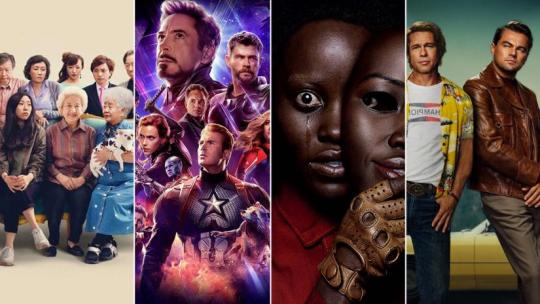
It was of the general consensus that 2019 was a truly amazing year for cinema, with audiences treated to a wide and impressive array of films. As usual, the year produced a number of sure bets from both well known directors and arthouse favourites, but it also treated cinemagoers to some truly unexpected treats from the cinematic mainstream.
Having watched just over 100 films (released in Australia), those that made this year’s ‘best list’ have been selected on the basis of the lasting impression they have left on this viewer after the lights have come up and the curtain’s been drawn.
So, what succeeded and what failed?
Ladies and gentlemen, may we please offer for your consideration…
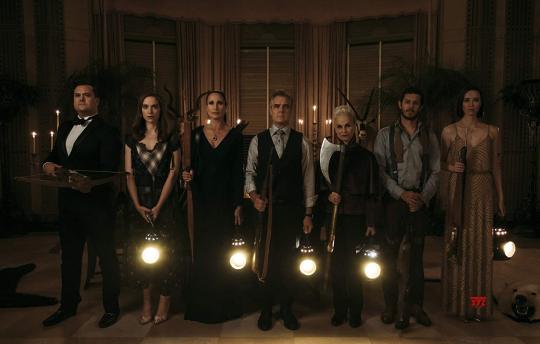
50. READY OR NOT
49. GLASS
48. HAL (DOCUMENTARY)
47. STUDIO 54 (DOCUMENTARY)
46. HOTEL MUMBAI
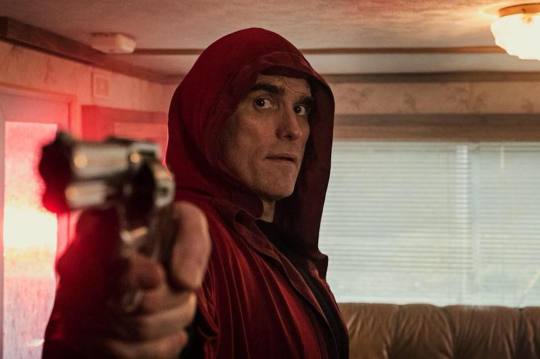
45. THE HOUSE THAT JACK BUILT
44. CRAWL
43. MISSING LINK
42. SCARY STORIES TO TELL IN THE DARK
41. THE CLOVEHITCH KILLER
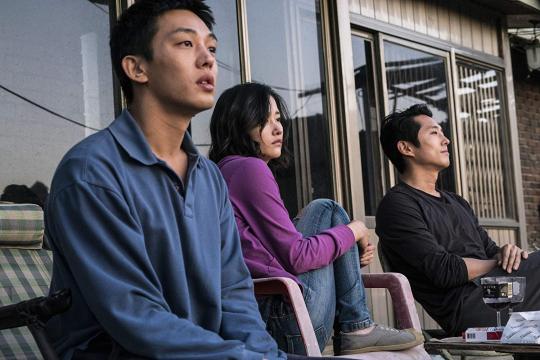
40. BURNING
39. AVENGEMENT
38. YESTERDAY
37. THE SISTERS BROTHERS
36. BRIGHTBURN
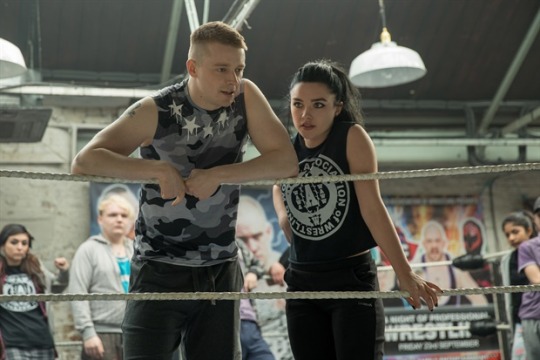
35. FIGHTING WITH MY FAMILY
34. HAIL, SATAN (DOCUMENTARY)
33. VELVET BUZZSAW
32. COLD PURSUIT
31. STAR WARS: THE RISE OF SKYWALKER
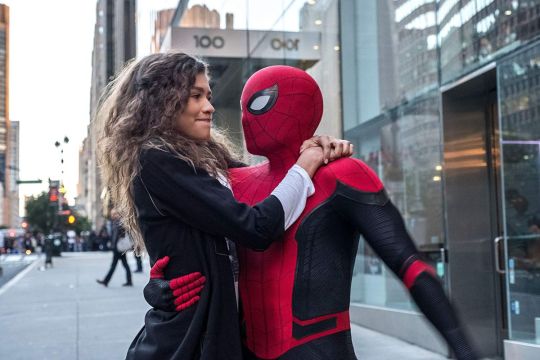
30. SPIDER-MAN: FAR FROM HOME
29. BEN IS BACK
28. THUNDER ROAD
27. THE REPORT
26. TOY STORY 4
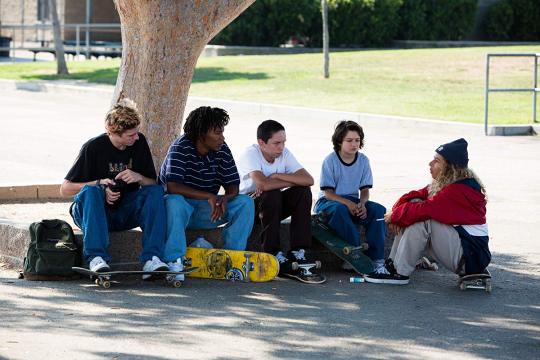
25. MID 90��S
24. LAST BREATH (DOCUMENTARY)
23. VOX LUX
22. GLORIA BELL
21. THE FAREWELL
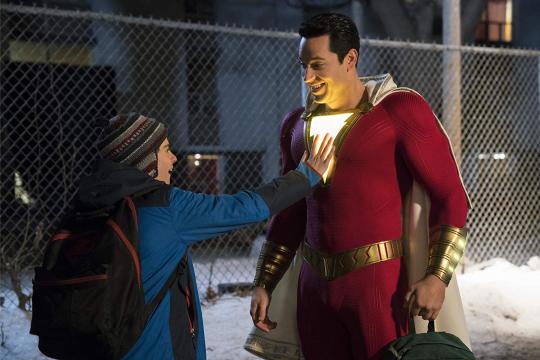
20. SHAZAM
19. FREE SOLO (DOCUMENTARY)
18. KNIVES OUT
17. BOOKSMART
16. DRAGGED ACROSS CONCRETE
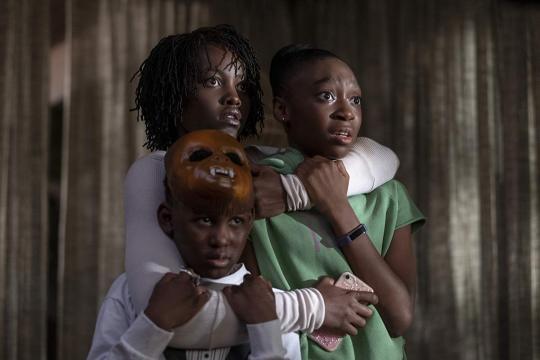
15. US
14. ROCKETMAN
13. AD ASTRA
12. JOJO RABBIT
11. MIDSOMMAR
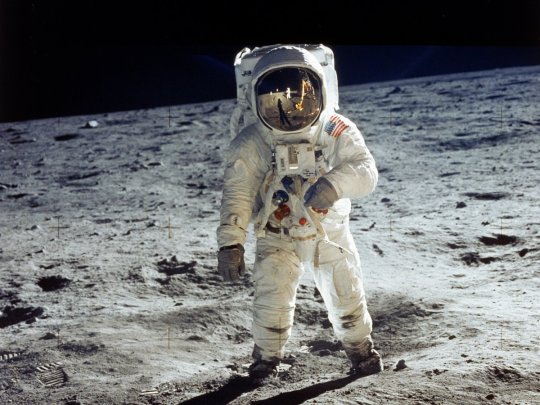
10. APOLLO 11 (DOCUMENTARY)
Though this outstanding assemblage of archival footage about the 1969 Apollo 11 moon landing featured no narration, interviews or analysis, director Todd Douglas Miller successfully managed to create an amazingly beautiful and surreal experience about one of humanities greatest achievements. Featuring never-before-seen footage of both the launch and the mission itself, ‘Apollo 11′ was as thrilling as any sci-fi and eye-wateringly beautiful to behold.

9. EIGHTH GRADE
It was an impressive year for many ‘coming-of-age’ films (‘Booksmart,’ ‘Good Boys,’ ‘Mid 90′s’) but it was writer-director Bo Burnham’s poignant and sensitive exploration of the challenges of early adolescence in the age of social media that really resonated. Focusing on the socially awkward Kayla - played with exquisite, jittery control by teen actor Elsie Fisher - ‘Eighth Grade’ was a thoughtful observation on the universal truths of growing up in the modern age.

8. FORD V FERRARI
With director James Mangold at the wheel, ‘Ford V Ferrari’ was a highly enjoyable sports car racing movie that left audiences with a lasting and highly satisfying impression all the way to the finish line. Based on the rivalry between the car manufacturers Ford and Ferrari in their pursuit to win the 24 hour Le Mans sports car race in 1966, ‘Ford V Ferrari’ featured heart-pounding racing sequences and impeccable performances from Matt Damon & Christian Bale.

7. THE NIGHTINGALE
Though not a horror film in the strictest definition of the term, you were less likely to find a more horrific cinematic experience this year than Australian director/writer Jennifer Kent’s 'The Nightingale.’ Kent's follow up to her critically acclaimed debut ‘The Babadook' was an extremely unsettling and bleak revenge tale, that relentlessly beat the audience with its unflinching violence and depictions of cruel racism.
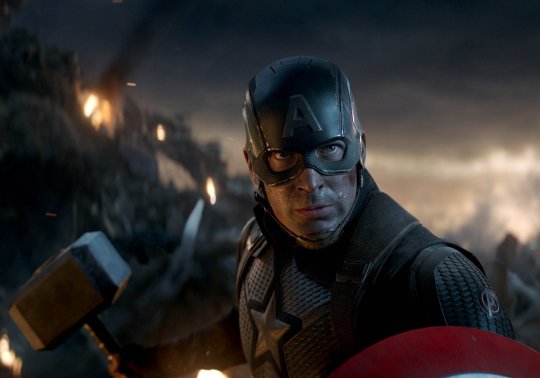
6. AVENGERS: ENDGAME
"Part of the journey is the end...” A cathartic and satisfying experience for all MCU fans worldwide, 'Avengers: Endgame' was everything we needed and more than we deserved. Full of callbacks and emotional pay-offs 10+ years in the making, ‘Avengers: Endgame' was a thrilling conclusion and a deeply emotional exploration of loss and love, duty and honour, friendship and family. Just remember to lean into the tears.

5. JOKER
Whether you ended up either loving or hating ‘Joker,’ there was no denying that the landscape of cinematic comic book adaptations had been changed forever. Drawing inspiration from Martin Scorsese’s ‘Taxi Driver’ and ‘The King of Comedy’ and featuring Joaquin Phoenix’s magnificently dedicated and exhaustive performance, ‘Joker’ was a truly outstanding cinematic achievement that would be discussed and debated for many years to come.

4. THE IRISHMAN
A magisterial entry in his long and masterful career, Martin Scorsese’s violent yet poignant crime epic featured flawless performances from a stellar ensemble cast (De Niro, Pacino, Pesci, Keitel). With a script that was nothing short of a master work, coupled with an intricate production design and stylish cinematography, ‘The Irishman’ felt like an apt end point for Scorsese’s fascination in narratives detailing the ultimate price that comes from a life of sin.
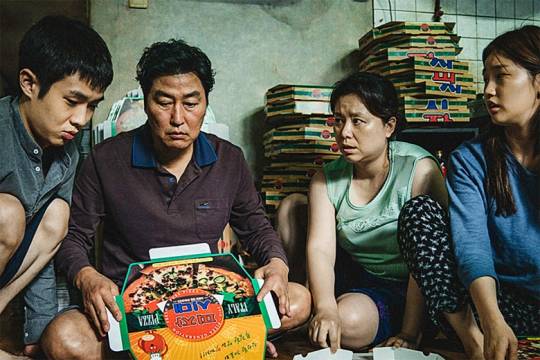
3. PARASITE
Renown South Korean filmmaker Bong Joon-ho already had an impeccable track record (’The Host,’ ‘Snowpiercer,’ ‘Okja’) but really stepped up his game with this brilliant and powerfully revealing social satire. An intricate look at modern-day social hierarchies, ‘Parasite’ kept flipping audience expectations with its radical shifts in tone - from clever comedy to violent, dark tragedy - whilst delivering some brilliant thematic elements.
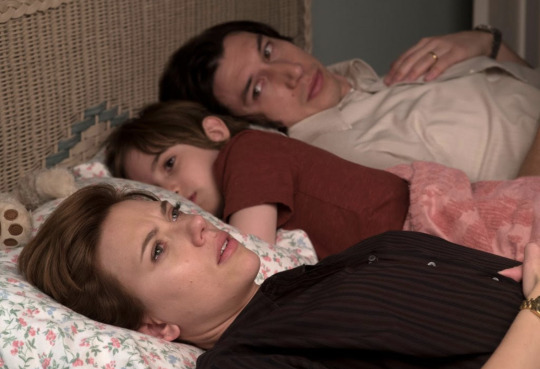
2. MARRIAGE STORY
Writer-director Noah Baumbach’s drama about the pain of the divorce process was a phenomenally crafted piece of cinema. A tragic tale amplified by both Baumbach’s screenwriting genius and tour-de-force performances from Adam Driver and Scarlett Johansson, ‘Marriage Story’ highlighted the struggles of an everyday situation and the real efforts to maintain it, leaving audiences with heavy hearts and thoughts.
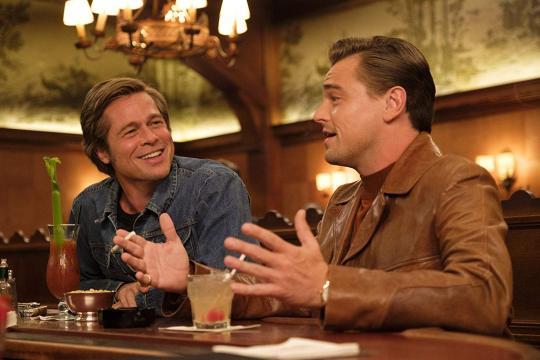
1. ONCE UPON A TIME...IN HOLLYWOOD
Set against the backdrop of Hollywood’s changing of the guard and the looming large presence of the Manson Family, ‘Once Upon A Time...in Hollywood’ was a melancholy, slow burning, comedic love letter to a filmmaking era long gone, and easily one of Quentin Tarantino’s best films.
As a wonderfully painted portrait of 1969 Hollywood, Tarantino delivered something truly special - a cinematic opus featuring so many film references, both obscure and in your face, that it was an absolute delight for cinephiles everywhere to luxuriate in the sights and sounds of this historical fantasy.
Leonardo DiCaprio and Brad Pitt delivered the most emotionally vulnerable performances of their careers as soon-to-be has-beens, whilst the film’s vibrant production and costume design and playful soundtrack perfectly captured a snapshot of a special place and time in film history.
If Tarantino is still adamant to call it quits on his directing career after his next movie, ‘Once Upon A Time...in Hollywood’ was a timely reminder that we should all definitely try to enjoy the filmmaker whilst we still can.
...AND NOW, THE WORST!

20. UNDER THE SILVER LAKE
19. THE MULE
18. STUBER
17. AT ETERNITY’S GATE
16. IT: CHAPTER 2
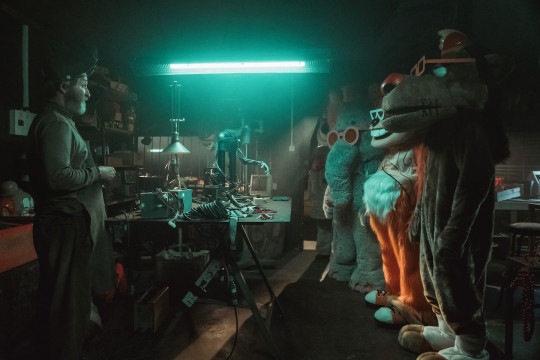
15. THE BANANA SPLITS MOVIE
14. HAPPY DEATH DAY 2U
13. ALADDIN
12. ANGEL HAS FALLEN
11. TERMINATOR: DARK FATE
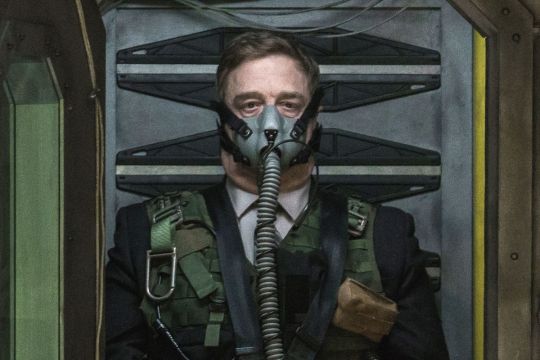
10. CAPTIVE STATE
Director Rupert Wyatt, the brains behind the effective ‘Rise of the Planet of the Apes’ reboot, easily delivered one of the worst sci-fi films of the year. Despite a premise filled with potential and talent both in front of and behind the screen, ‘Captive State’ was a major disappointment. The screenplay (co-written by Wyatt) was an epic mess of confusion that lacked both a compelling narrative and characters to hold it together, resulting in a huge misstep for all involved.

9. RAMBO: LAST BLOOD
It’s ironic a film franchise that started out telling the sad story of a man trying to show an uncaring world he was still a human being should have its final chapter demonstrate the exact opposite. This much touted ‘final entry’ in the Rambo saga was a deeply unpleasant and unnecessary exercise that featured little wit, inventiveness or originality. The character of John Rambo deserved a better swan song than ‘Rambo: Last Blood,’ and so did we.
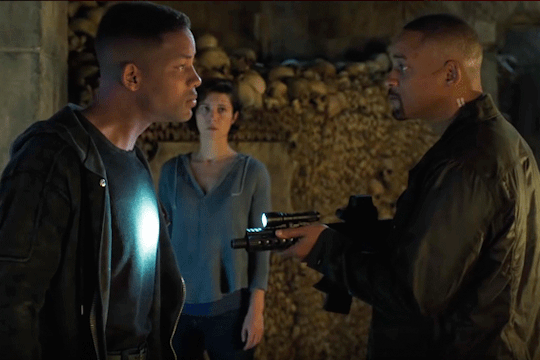
8. GEMINI MAN
Directed by Ang Lee and starring Will Smith as a government assassin facing off against a clone of his younger self, ‘Gemini Man’ was an empty and tiresome thriller dressed up in a lot of fancy tech, and Smith’s biggest box office flop since ‘Wild, Wild West.’ Despite costing $138 million to produce, all the Hollywood SFX wizardry in the world couldn’t excuse a lifeless picture, with the final result nothing more than a bland action clone.

7. THE LION KING
Soulless was how best to describe Disney's shot-for-shot live action version of the 1994 animated classic. The core failure of this latest incarnation of 'The Lion King' was the studio’s inexplicable choice to go fully photorealistic with the animation. The animal characters may have all been zoologically accurate, but there was absolutely zero expression or emotion conveyed in their faces (let alone the voice talent). Sadly, ‘The Lion King' was nothing more than a cash grab that relied heavily on the nostalgia and success of the original,

6. WELCOME TO MARWEN
Robert Zemeckis, the director behind such cinematic gems as ‘Forrest Gump,’ ‘Back to the Future’ and ‘Cast Away,’ was also responsible for this woeful and misguided outing. Despite being based on the true story of a man learning to cope with a terrible trauma through the power of art and imagination, ‘Welcome to Marwen’ focused its attention on the visuals of the story instead of its narrative. Our advice? Watch the original 2010 documentary ‘Marwencol.’
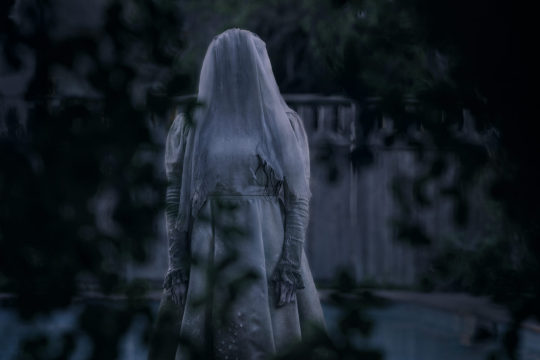
5. THE CURSE OF LA LLORONA
Let’s cut straight to the point - the reason Hollywood keeps making cheap, crappy horror films with little, if any, imagination is because they will always make their money back within the opening weekend. And ‘The Curse of La Llorona’ was a prime example of this, a formulaic slab of supernatural dirge destined to be forgotten by year’s end. Filled with jump scares, loud musical cues and devoid of any originality, horror fans deserved better than this.
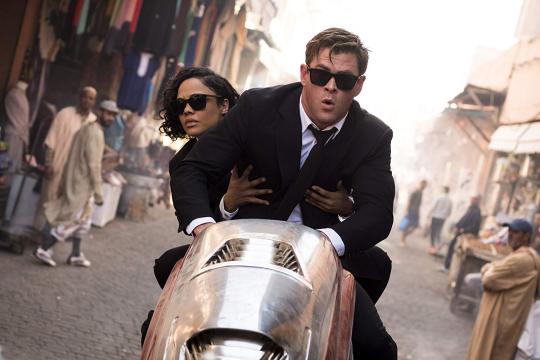
4. MEN IN BLACK: INTERNATIONAL
Despite the box office success of the first ‘Men in Black’ film and its two well-received sequels, ‘Men in Black: International’ was a dull and dreadful reboot that severely tarnished the franchise. There were all sorts of bad things happening in this fourth film, but none were as unforgivable as wasting the talents of both Chris Hemsworth and Tessa Thomspon. You didn’t need your memory wiped after this one - the movie did it for you.

3. DARK PHOENIX
The ‘X-Men’ films have been less hit and more miss in recent times and, unfortunately for fans, ‘Dark Phoenix’ closed out the this once-great franchise in an extremely disappointing fashion. Suffering from extensive rewrites and reshoots to the point where not even the film's stars knew which characters they were playing, ‘Dark Phoenix’ was a far cry from the pitch-perfect conclusion James Mangold gave us with the vastly superior ‘Logan.’
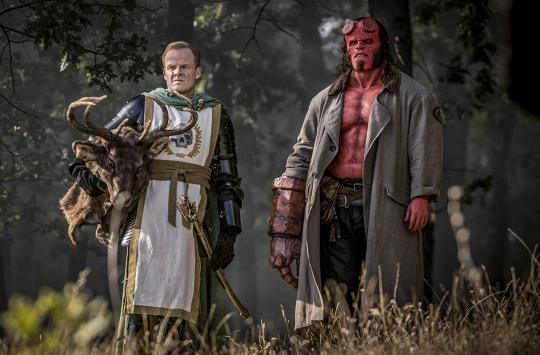
2. HELLBOY
Director Neil Marshall’s bloody misfire of the ‘Hellboy’ franchise was a damned mess, undeserving of both your hard-earned money and your valuable time. The film’s storytelling was clumsy rather than clever, the atmosphere oppressive rather than immersive and the characters colourless rather than captivating. Try to imagine Guillermo del Toro’s original two movies, except without any spark, wit, fun, tension and excitement. Absolute hell, boy!

1. CATS
Don’t act as if you’re surprised by this year’s winner of worst film - ‘Cats’ was an epic misfire, deserving of the vitriol it received from critics everywhere (the furry community, however, LOVED IT).
From the initial spark of the thought that turning Andrew Lloyd Webber’s musical into a film would be a good idea, the project was doomed. With every single decision involved in this movie more baffling than the last, the biggest and most fundamental problems were the concept design of the cats themselves and there being absolutely no semblance of a plot.
Despite there being pussy galore, ‘Cats’ failed to capture any sense of spectacle or fun, and instead plodded through an inane, boring and predictable story that was used mostly as a platform for some big West End musical numbers and A-list cameos.
Watching your neighbour’s cat lick its own arse was far more enjoyable to behold than this cinematic disaster.
7 notes
·
View notes
Text
“Did you have a boyhood dream, Jack”

“...to tread the boards, or bat for Australia?”
“Oh, to ride the Tour de France, but then the war happened. And what were your girlhood dreams, Miss Fisher?”
“I'm living them, Inspector.”
19 notes
·
View notes
Link
Sarah Trent | Longreads | November 2019 | 22 minutes (4,920 words)
Jack Thomas was home in time for dinner, but he wasn’t really home. His head was still in the fire, gnawing on the details of what his strike team had accomplished, hazards they’d found, a care facility they’d partially saved from the flames. For 19 hours of their nine-day deployment, his team had fought to save those 25 senior apartments, which had somehow been spared when the wildfire tore through town. Thomas knew that if they could stop the fire at the building’s central atrium, these homes would stay standing. And they did.
Walking through his front door, in a suburban Santa Rosa, California, neighborhood the weekend before Thanksgiving, Thomas still smelled of smoke.
He had dinner with his wife, shared photos from the fire, and talked through their holiday plans. Afterward, he unfurled parcel maps across the table while his bags waited, packed, on the couch. After more than a week fighting the most destructive wildfire in California history, the Santa Rosa fire captain had just a few hours to study the maps and get some rest: His deployment on a fire crew was over, but hundreds of people were missing, and FEMA’s Urban Search and Rescue Task Force #4 needed someone to help manage the search.
Thomas set his alarm for 3 a.m. He was going back to Paradise.
That night, the next morning, and for many days after, trained search and rescue professionals and volunteers from across California and beyond drove into the smoldering heart of catastrophe. The Camp fire, which started the morning of November 8, 2018, and within hours had overtaken the town of Paradise, was unprecedented: in size, pattern, intensity, damage, and number of people missing, which climbed as high as 1,300. It required the largest search in state history — in conditions few of the searchers were trained for. But to leaders like Thomas, it seemed a portent of things to come: Wildfires are becoming more common and worse. And other disasters are, too.
Rachel Allen got to Paradise two days before Thomas, after dark on Friday, November 16, joining the first wave of volunteer searchers responding to the call for mutual aid. It was the earliest she could arrive, leaving her postdoc research behind for the weekend. A member of the Bay Area Mountain Rescue (BAMRU) team since 2012, she has deployed to dozens of searches across the state, usually for one person missing in the wilderness: a snowshoer lost in a storm, a hiker injured and stuck off-trail, or a person with Alzheimer’s who wandered away from home.
She and her team spend hundreds of unpaid hours each year practicing specialized search and rescue skills. But in Paradise, little of their training in snow conditions, rope systems, or tracking was relevant. Allen wore a white Tyvek suit over her hiking boots and learned how to identify what was typically the only trace of people who hadn’t escaped the blaze: small fragments of bone.
When Thomas arrived Sunday morning, just in time for the morning briefing, searchers in a rainbow of high-viz red and orange agency-branded jackets filled the Tall Pines Entertainment Center parking lot: county search teams, mountain rescue teams, law enforcement, the National Guard, all ready for the day’s assignments.
Thomas joined the fray with USAR Task Force #4 — one of 28 teams in the nation equipped for large-scale disaster relief. Most USAR members, like Thomas, are professional firefighters. On top of a grueling season fighting record-setting wildfires, this was his team’s third urban search deployment in as many months. They’d been to the sites where Hurricane Florence made landfall that September. Where Michael had hit in October. And now this.
New kinds of disasters require new response plans and training, and bigger ones need more people who know what to do.
All weekend, the air was thick with smoke and a pervasive otherworldliness. “If you had told me I was on Mars, I’d be like, ‘OK, right,’” Allen told me. She searched for two days, mostly in silence, wearing a mask she had to remove to speak. Her hiking boots sank with every step into ash up to eight inches deep. The sky was a murky orange. Trees were still green. Everything else was gray. It was a town like any other. But everything had changed.
In 2018, wildfires swept not only California, Australia, and Greece, but also the colder, wetter landscapes of England, Ireland, and Sweden. Kerala, India, was hit by one of the worst floods ever recorded, killing more than 500 people; a heat wave hospitalized 22,000 in Japan; and a series of tropical storms and typhoons affected more than 10 million across the Philippines. A bomb cyclone slammed the U.S. Northeast. Avalanches crushed Colorado. Mudslides buried Montecito, California. Record-breaking hurricanes battered the Southeast. As of this writing, what has come to be known as “fire season” is well underway in California, and fires blaze in New South Wales and Queensland, Australia.
To climate scientists, the pattern of increasing extremes comes as no surprise — it’s in line with projections for life on a warming planet. And at 1.5 degrees Fahrenheit above average, according to NASA, 2018 was one of the hottest years on record. 2019 is on track to be hotter.
When disaster strikes, rescuers like Thomas and Allen drive toward the danger the rest of us are desperate to escape. They’re trained to find us when we’re stuck somewhere — lost, injured, or worse. But a changing planet has raised the stakes: Avalanches, tornadoes, fires, and floods fill news cycles with counts of the missing and cell phone footage of neighborhoods turned to wilderness. The U.N. warns that climate catastrophes are now happening once a week across the globe. And unpredictable shoulder seasons — the busiest months for search and rescue calls — are getting longer. New kinds of disasters require new response plans and training, and bigger ones need more people who know what to do.
Search and rescue teams train for the worst conditions. But the worst conditions are getting worse. Search teams are stretched. Rescuers are burning out. We are all less safe.
***
On a May 2013 day in Naujaat, in the Canadian province of Nunavut — an Inuit hamlet known at the time as Repulse Bay — the local search and rescue team was called after a nearby traveler activated an emergency GPS beacon. It was a day with almost 18 hours of sunlight, but blizzard conditions postponed the search.
The call itself was unremarkable — Nunavut search and rescue records are full of similar reports: emergency signals turned on in harsh weather, hunters who’ve run out of gas, a group trapped by moving ice. Nearly everyone is brought home safe. But one trend is nonetheless alarming: In 2016, researchers showed that search and rescue calls in the province had doubled over a decade.
The reasons were complex. More powerful boats and snowmobiles carried hunters, fishers, and travelers farther from safety; people’s preparedness for harsh conditions had not kept pace with their ability to travel so far; high costs to maintain equipment led to makeshift repairs and more frequent breakdowns. But one factor stood out: As the Arctic warms — and it’s warming faster than anywhere else on earth — weather and ice conditions have become less and less predictable.
“It’s the perfect storm” for accidents and the ensuing calls for rescue, researcher Dylan Clark told a Canadian Senate committee in 2018. And this storm is anything but localized.
In Iceland, where tourism is booming and glacier driving tours are popular, the ice is melting, opening crevasses that threaten vehicles and people. A woman died in 2010 after falling into one with her 7-year-old son just a short distance from a tour jeep.
In the Alps, retreating glaciers have changed popular climbing routes, increasing exposure and difficulty on nearly all alpine climbs. Where there once was snow, there’s now ice. Where there once was permafrost, there’s now unstable rock. One catastrophic rockfall in Bondo, Switzerland, killed eight hikers in 2017. Their bodies were never found.
Search and rescue teams train for the worst conditions. But the worst conditions are getting worse.
Eddy Cartaya, a Portland Mountain Rescue volunteer and expert on glacier cave exploration and rescue, says that across the Pacific Northwest, more and more people are exploring the backcountry. Outdoor equipment is better and less expensive than ever, cultural interest in the outdoors is surging, and longer summers mean more access to beautiful, wild places.
Normally, “deep snow-pack insulates some of these locations from inexperienced people,” Cartaya said. But that’s changing. Hiking into areas with now-melting glaciers — in which ice caves are prone to sudden collapse, volcanic gas-filled fumaroles are becoming exposed, and flash floods of glacial melt can occur on the bluest of bluebird days — even an expert outdoorsperson is more likely to run into trouble.
Many of these hazards are new to rescuers, too, making operations riskier for everyone. Now, Cartaya said, his team trains in glacier caves — areas most mountaineers spend their entire careers trying to avoid. After two rescues in noxious fumaroles, the team has purchased new equipment to measure crevasses for hydrogen sulfide. And with a higher volume of calls than ever before — to a group of volunteers in an industry where burnout is already high (few last more than a couple of years) — they’ve increased their recruitment efforts, tripling their most recent cohort of trainees.
But you don’t need to be a backpacker, hunter, or mountaineer heading deep into the wilderness to require rescue from a disaster compounded by climate change. Increasingly, that disaster is coming to us.
In Switzerland, rockslides have buried villages and stranded residents. In Alabama, devastating tornadoes have cut swaths through towns and neighborhoods. Across the Midwest, floods have done the same. In Florida, Mexico, and the Caribbean, residents have evacuated from record hurricane after record hurricane. And all of this, according to climate scientists, is at least partially attributable to a warming planet, in which ice is melting at record speed and rising levels of atmospheric water are strengthening storms and producing unprecedented rainfall.
While the Eastern U.S. is inundated with water, the Western states suffer without it: As temperatures rise, the snowpack melts faster and forests dry out. By late summer, much of California is a tinderbox. Any spark — lightning, a barbecue, a faulting power line — can set the whole thing off.
***
Ten of the 20 most destructive wildfires in California’s history have occurred since 2015. They include the two most destructive (2018 Camp and 2017 Tubbs fires), the two largest (2018 Mendocino Complex and 2017 Thomas fires), and the deadliest by far: In Paradise, searchers found 85 people dead. Two remain missing. This is more than the previous three deadliest fires combined.
For Thomas and his team, the Camp fire set another kind of record and, leaders believe, a precedent: It was the first time FEMA USAR teams had ever been called to a fire. Thomas and others doubt it will be the last. The federal program, which launched in 1991, was designed primarily to respond to catastrophic earthquakes. But as the nature of disasters has evolved, USAR task forces have too. In 1994, teams deployed to the Northridge quake in Los Angeles. A year later, to the Oklahoma City bombing, and in 2001, to downtown Manhattan after the World Trade Center attack.
In 2005, all 28 teams went to Hurricane Katrina, and as the size and severity of hurricanes have increased since, so have the calls to USAR: Sandy in 2012. Matthew in 2015. Harvey, Irma, and Maria in 2017; Florence and Michael a year later; Dorian this fall.
Thomas went to most of them. “We’re in the water business now,” he said. And the fires? “I totally think that’s going to be in our scope now.”
As a firefighter of more than 30 years who fought the 2017 Tubbs Fire in his own city and countless more around the state, Thomas knows firsthand the ways wildland fires have changed. “It never used to be like this,” he said. When he first started, he’d go to one, maybe two “mutual aid” calls (that is, requests to help other agencies) per season, fighting wildland fires to the scale of around 10,000 acres. “Since 2015 it’s just been non-stop with these major fires,” he said.
Kickstart your weekend reading by getting the week’s best Longreads delivered to your inbox every Friday afternoon.
Sign up
In 2018, between USAR calls and wildland fire response, Thomas spent 75 days working outside Santa Rosa County, including 21 days in a row at the Mendocino Complex fire. When he came home from that blaze — which burned nearly 460,000 acres before it was finally contained — he had just enough time to move his daughter to college before he was deployed again.
“It pulls on your heartstrings to go help,” he said. But every time he arrives at base camp for another wildland fire, he sees the same guys, grim with fatigue.
“You can see it in guy’s eyes,” he told me. “It seems like it’s more and more and more and more.” Between fighting fires around the state, flying east for hurricane missions, and expecting that USAR’s scope will grow, the effort is not sustainable, he said. “But you know the thing is, who are you going to call? With the amount of missing residents, the amount of destroyed homes — who’s going to do that work?”
Headquarters for Thomas’s team — one of eight in California — is tucked between I-880 and the train tracks in East Oakland, behind a city vehicle maintenance facility. On a cold March morning, a dozen men and women in dark shirts and caps emblazoned with their agency logos — Pittsburg Fire, Sonoma Fire, Contra Costa Fire — ambled from room to room, catching up and collecting signatures for their annual reorientation exercise.
Each member checked the fit of their issued full-face air mask, re-upped their baseline EKG test, and verified, essentially, that they knew the drill: Every checkpoint is a step they’ll repeat in the hours before an actual deployment. In the garage, Thomas signed off on helmet fits and asked each member if their go-bag was ready.
“97 you said?” He searched for Tracey Chin’s duffel among the hundreds of numbered red bags on the shelves surrounding the garage. He found it and pulled it down, and she unzipped the pockets to inspect what was inside. She checked the size of the clothing, in case it had changed, and the toothpaste’s expiration date. The team has just four hours to deploy when a call for mutual aid comes in, and they must be prepared for 72 hours of self-sufficiency. The “creature comforts,” as Chin calls these basic necessities, are nearly as important as a tightly sealed air mask.
She zipped the bag closed over carefully folded T-shirts, and Thomas snapped a red plastic lock seal through the zipper pull. Her mask fit. Her photo had been taken. Her sign-off sheet was full. Chin was ready to deploy.
And this team fully expects to — though until recently, that was far from their norm.
“We went eight years without deploying,” said Oakland Battalion Chief Robert Lipp, who leads the task force. But since 2017, they’ve fielded six calls. Now, come autumn, when hurricane and wildland fire seasons are both in full swing, he said he’s “more surprised if we don’t go somewhere than if we do.”
To climate scientists, the pattern of increasing extremes comes as no surprise — it’s in line with projections for life on a warming planet.
As the need for rescuers goes up, the whole response system is stretched thin. Two Southern California USAR teams, which largely pull on members from one fire department each, were undeployable for USAR calls last fall while wildfires raged in Riverside and Orange counties. The Oakland team is more insulated from that pressure: Its 230 members — enough for three full rescue units — come from 15 different departments. The team has never had to turn down a call for mutual aid, Lipp said. “But we’ve been awful close.”
“When there’s a disaster, we all want to go.” But, he added, “anyone who says it’s not worsening is not paying attention.”
***
On the first day of SAR-Basic — required for anyone who hopes to join Bay Area Mountain Rescue — 15 recruits listened and took notes as veteran members explained the weekend training. Wearing an array of technical fleeces and down coats, it was obvious that they were the newbies: Every sworn-in member wore a red jacket — BAMRU patch on one shoulder and the San Mateo County Sheriff star on the chest — to insulate against the early morning chill.
The first lesson in every emergency response training — from first aid through wilderness paramedicine — is the same, though every teacher has their own way to phrase it: The most important person at the scene is you; don’t let someone else’s emergency become your own; your safety comes first. Adrenaline and the powerful urge to help someone in need can be difficult to overcome — and dangerous to everyone.
Under the county park picnic shelter, Nathan Fischer sat atop a long wooden table, his gray waffle fleece and close-cropped beard blending into this year’s cohort of mostly twentysomething men. With one leg casually folded, he absorbed the morning lectures. He, like everyone seated around him, was there in part to fulfill that urge to help. “Other people adopt kittens or mentor kids,” he told me. “I’m awful with kids, but maybe I can stop the bleeding.”
An instructor addressed the group. “The first rule of search and rescue,” he said, “is don’t create more subjects.”
This year’s safety talk was unusually personal for the team. Just months earlier, a Ventura County mountain rescuer was killed and two teammates were injured in a storm while trying to help the victims of a rollover crash. The team was en route to a training exercise. The roads were slick. Another vehicle lost control.
At every training station at SAR-Basic, the safety talk was reinforced. Fischer and the other recruits learned to perform a fine grid search, crawling shoulder to shoulder looking for shell casings in the dirt and leaves — while also scanning for poison oak. They learned how to load and carry a person in a titanium-frame litter — along with effective communication to spread the load, and to lift and move as one. Navigation skills, radio skills, tracking skills. And then, finally, a mock search.
Fischer, leading a team of three, talked his group through the details of the briefing. Two trail runners were missing. Their team had been assigned a trail to search. They grabbed a radio and a map and set out for the trail, flanked by mentors.
’It’s the perfect storm’ for accidents and the ensuing calls for rescue.
The mock search is an audition of sorts, at which members and the soon-to-be can feel out their future colleagues. Trust, teamwork, and leadership are as important as technical skill and search savvy. Those who are accepted to train with BAMRU will start deploying on calls as soon as they wish: Trainees join searches while they work through a long list of skill sign-offs and training exercises that typically take a year to complete. The best lessons — and the hardest — will come in the field.
After a morning of searching for the “missing” runners, Fischer’s team broke for lunch. Mentor Eric Chow — just a year into his own tenure on the team — knew that the action would soon pick up. He pulled Fischer aside. “What do you have for PPE?” Chow asked, using shorthand for personal protective equipment — namely, in this case, nitrile gloves. Fischer had none. Chow found a pair in his radio chest harness and handed them over.
Then the radio blared, cutting into the quiet on the trail. Another team had found the last missing subject. Fischer looked at the map. They were close. When they arrived on scene, his wilderness medical training kicked in. He went straight toward the subject — a woman who had fallen off-trail and injured her leg — and joined another rescuer assessing her injuries. He removed her shoe and checked the circulation in her foot.
Uphill, proctors were watching. One of them whispered: “Where are his gloves?”
Blood is a hazard. Smoke is a hazard. Needles, nails, cornices, rocks, hypoxic subjects, moving vehicles. The powerful urge to help someone can come at profound personal cost. Forgetting safety precautions in an exercise merely means failure. Being without them in the field can mean creating more subjects.
Physical safety is paramount, but psychological preparation is important as well: The emotional costs can be just as high.
This team typically deploys to difficult, far-away searches — ones that have already gone on for days without success. Stopping the bleeding (or rescue at all) is not usually involved: Often, they recover bodies.
Veteran team member Alice Ng is haunted by the search for a young mountaineer crushed by an avalanche. The recovery of a body brings closure to everyone, but this one hit her hard: The traumatic stop of this boy’s life, while doing something she might have done too; his family, walking in circles around the airfield, with nothing to do but wait. The day after finding him, while chopping vegetables for dinner, she suddenly broke down in tears. The task was so normal, she told me: “That can be taken away from you so quickly.”
For Eric Chow, one of the mentors who took part in the mock rescue, one search near Lake Tahoe was especially memorable. “We were in our element there,” he remembered. It was high angle, high altitude, in avalanche conditions, a search for one missing person. It was everything this team trains for. The Paradise fire, on the other hand, felt like the opposite. There were scores of bodies reduced to bone fragments, cesspits hidden under the ash, and “widowmakers” — the precarious branches of burned trees — that could fall at any moment. “We don’t know any of those hazards,” he said.
***
It’s difficult to plan or train for what’s never been experienced before, and in climate-influenced disasters, nothing is as it was. The Camp fire was apocalyptic. Michael St. John, long-time leader of Marin Search and Rescue and newly retired from the Mill Valley Fire Department, deployed to Paradise on day five of the blaze to help Butte County search coordinators and state search and rescue leaders wrap their collective heads around organizing such a massive search.
“What’s your PPE plan?” he recalled asking the leaders at search command. He knew they’d need air masks. Tyvek. Steel-shanked boots if they could find them fast enough. And decontamination facilities. When a forest burns, the smoke is dangerous. When a city burns — with all its plastics, paints, chemicals, and more — it’s deadly. If not today, then perhaps years from now when the cancers start growing, St. John said. And while many teams like BAMRU and Marin SAR have limited county insurance for in-field accidents, volunteers don’t get workers’ compensation. They just get sick.
You don’t need to be a backpacker, hunter, or mountaineer heading deep into the wilderness to require rescue from a disaster compounded by climate change. Increasingly, that disaster is coming to us.
From search headquarters at the Tall Pines bowling alley, where cots were set up in the bar and a rec room was converted to mission command, St. John searched Amazon for boots. A dozen deputies raided every Home Depot in the Central Valley for supplies. The National Guard was called to set up mass decontamination tents.
On the first day of the search, central command ran out of P-100 masks, which offer more protection than the N-95 masks the public was encouraged to wear. Some rescuers who couldn’t get masks in the first days of the search, before donations poured in, turned around and went home. The air was so thick with smoke and particulate matter that it choked out even the sun. Just a few hours in Paradise was too much for some: The personal risk was just too great.
Over the week, St. John and search leaders troubleshot challenges. They had state, county, and federal resources at their disposal, and while every one of them was trained in the same incident command structure — a logistics and hierarchy system built to scale to any emergency — each group had its own culture, communications, and even GIS mapping systems.
Leaders struggled to manage the growing list of missing people — and to commit enough resources to sort all 1,300 reports, winnow out redundancies, and narrow the search. As best they could under pressure, they integrated lessons from failures along the way, improving the system a little bit more every day.
And every day, the massive search continued across 240 square miles, where homes, stores, schools, and retirement homes — more than 18,000 structures in all — were now gone. Just the grid of streets remained, along with stone, metal, and randomly spared objects. Chimneys stood like sentries. So did radiators. Mailboxes. The intricate metalwork of a headboard. Cars had melted by the roadside, their metal shells resolidified as river-flows on pavement.
As a USAR search manager, Thomas worked “forward reconnaissance,” evaluating structures and triaging search efforts before larger teams were assigned to move through. Allen, with BAMRU, led one of those teams, each member carrying a shovel or rake. In full, hooded Tyvek, with double-canistered P-100 masks on or around their necks, they searched house by house, block by block, using rake tines to pick through the dense mixture of ash and nails and metal debris.
They’d been trained on arrival to look for one thing only: yellowed or charred fragments of bone, just inches long, and barely recognizable.
They searched most carefully near the remains of beds. The fire had begun around 6:30 a.m., and by 8, it had rushed into Paradise. Mattress coils were easy to spot. Bathrooms were recommended as focus areas, too, but toilets were harder to find. Somehow, Allen said, most of them were gone.
On Sunday afternoon, on their last assignment of the day, Allen led eight BAMRU members to Cape Cod Mobile Estates, two miles up the road from search command. The sign was intact at the entrance, and the office was still mostly standing. They parked on the H-shaped road of the park, where every other structure had been flattened, their corrugated metal roofs collapsed onto the nothingness of ash. The group moved through quickly, in pairs, spending a few minutes at each structure before they focused on two that a deputy requested. As they finished each search, one member spray-painted an X on the driveway: standard communication in bright orange paint. At the top of the X, the date. At the bottom, a zero. No bodies found.
It’s difficult to plan or train for what’s never been experienced before, and in climate-influenced disasters, nothing is as it was.
Allen drove home that night with teammates, her Prius covered in gray, toxic ash. Once home, she struggled to explain the experience. The fires are too big, she’d told her friends and, later, me. The resources — masks and people and insurance coverage — are just not going to be enough, she said. “Now I know how the world ends.”
A few days later, Thomas went home to channel everything he had left into hosting 20 guests for Thanksgiving. When the last one left, he collapsed. For two whole days, he felt awful, and it took weeks to recover. Next year, he told his wife, he’ll turn down some of the calls. But that’s easy to say in the off-season — that annual period of rest which is, of course, getting shorter.
***
Months after the fire, on a sunny day in April, Michael St. John, enjoying retirement, was home from an early morning run up Mount Baldy. His neighborhood — and all of Marin County — was lush and green from heavy winter rains, and while fire danger was no doubt out of mind for most, it was weighing on his. California, after all, doesn’t stay green for long. He searched the state website from his couch, and even he was shocked to see that the first wildland fires of the year had already begun — weeks ahead of normal.
St. John worries that the lessons from Paradise can’t be integrated fast enough: The season is too much of a crush. He worries about the Santa Ana winds — those northeasterly gusts that every autumn fan the flames. He worries that his county, too, is at risk.
When I asked him where he most worries about being affected by future wildland-urban fires, he climbed onto a table to read the small print on a huge wall map of California. He ran one finger up the entire eastern edge of the Central Valley, reading out the name of every major town it crossed. Porterville. Mariposa. Sonora. Placerville. This state was built to burn.
The Santa Ana winds are blowing again. National Weather Service meteorologists have called this season’s gusts dangerous, extreme, and historic. Across the state, vegetation is parched, humidity is low, temperatures have hit record highs, and some 60 miles north of St. John’s kitchen table, Sonoma County is smoldering. At the height of the October Kincade blaze, the evacuation zone covered some 180,000 people. 78,000 acres are black. The latest Predictive Services report, released November 1, says large fire potential could last through the end of the year.
And in the Atlantic and Mediterranean, major storms are brewing. In Japan, Washington state, and the Gaza Strip, flood banks are breaking. Everywhere, rocks and mud and gas are being freed from the ice. And every town, like Paradise one year ago, is on a precipice: It’s a place like any other, in a world that has already changed.
***
Sarah Trent is a freelance journalist covering the environment, food systems, economic development, and the ways everyday people around the world are affected by the climate crisis and environmental degradation.
Editor: Kelly Stout Fact checker: Steven Cohen Copy editor: Jacob Gross
0 notes
Text
Pop Picks – February 11, 2019
February 11, 2019
What I’m listening to:
Raphael Saadiq has been around for quite a while, as a musician, writer, and producer. He’s new to me and I love his old school R&B sound. Like Leon Bridges, he brings a contemporary freshness to the genre, sounding like a young Stevie Wonder (listen to “You’re The One That I Like”). Rock and Roll may be largely dead, but R&B persists – maybe because the former was derivative of the latter and never as good (and I say that as a Rock and Roll fan). I’m embarrassed to only have discovered Saadiq so late in his career, but it’s a delight to have done so.
What I’m reading:
Just finished Marilynne Robinson’s Home, part of her trilogy that includes the Pulitzer Prize winning first novel, Gilead, and the book after Home, Lila. Robinson is often described as a Christian writer, but not in a conventional sense. In this case, she gives us a modern version of the prodigal son and tells the story of what comes after he is welcomed back home. It’s not pretty. Robinson is a self-described Calvinist, thus character begets fate in Robinson’s world view and redemption is at best a question. There is something of Faulkner in her work (I am much taken with his famous “The past is never past” quote after a week in the deep South), her style is masterful, and like Faulkner, she builds with these three novels a whole universe in the small town of Gilead. Start with Gilead to better enjoy Home.
What I’m watching:
Sex Education was the most fun series we’ve seen in ages and we binged watched it on Netflix. A British homage to John Hughes films like The Breakfast Club, Ferris Bueller’s Day Off, and Pretty in Pink, it feels like a mash up of American and British high schools. Focusing on the relationship of Maeve, the smart bad girl, and Otis, the virginal and awkward son of a sex therapist (played with brilliance by Gillian Anderson), it is laugh aloud funny and also evolves into more substance and depth (the abortion episode is genius). The sex scenes are somehow raunchy and charming and inoffensive at the same time and while ostensibly about teenagers (it feels like it is explaining contemporary teens to adults in many ways), the adults are compelling in their good and bad ways. It has been renewed for a second season, which is a gift.
Archive
January 3, 2019
What I’m listening to:
My listening choices usually refer to music, but this time I’m going with Malcolm Gladwell’s Revisionist History podcast on genius and the song Hallelujah. It tells the story of Leonard Cohen’s much-covered song Hallelujah and uses it as a lens on kinds of genius and creativity. Along the way, he brings in Picasso and Cézanne, Elvis Costello, and more. Gladwell is a good storyteller and if you love pop music, as I do, and Hallelujah, as I do (and you should), you’ll enjoy this podcast. We tend to celebrate the genius who seems inspired in the moment, creating new work like lightning strikes, but this podcast has me appreciating incremental creativity in a new way. It’s compelling and fun at the same time.
What I’m reading:
Just read Clay Christensen’s new book, The Prosperity Paradox: How Innovation Can Lift Nations Out of Poverty. This was an advance copy, so soon available. Clay is an old friend and a huge influence on how we have grown SNHU and our approach to innovation. This book is so compelling, because we know attempts at development have so often been a failure and it is often puzzling to understand why some countries with desperate poverty and huge challenges somehow come to thrive (think S. Korea, Singapore, 19th C. America), while others languish. Clay offers a fresh way of thinking about development through the lens of his research on innovation and it is compelling. I bet this book gets a lot of attention, as most of his work does. I also suspect that many in the development community will hate it, as it calls into question the approach and enormous investments we have made in an attempt to lift countries out of poverty. A provocative read and, as always, Clay is a good storyteller.
What I’m watching:
Just watched Leave No Trace and should have guessed that it was directed by Debra Granik. She did Winter’s Bone, the extraordinary movie that launched Jennifer Lawrence’s career. Similarly, this movie features an amazing young actor, Thomasin McKenzie, and visits lives lived on the margins. In this case, a veteran suffering PTSD, and his 13-year-old daughter. The movie is patient, is visually lush, and justly earned 100% on Rotten Tomatoes (I have a rule to never watch anything under 82%). Everything in this film is under control and beautifully understated (aside from the visuals) – confident acting, confident directing, and so humane. I love the lack of flashbacks, the lack of sensationalism – the movie trusts the viewer, rare in this age of bombast. A lovely film.
December 4, 2018
What I’m listening to:
Spending a week in New Zealand, we had endless laughs listening to the Kiwi band, Flight of the Conchords. Lots of comedic bands are funny, but the music is only okay or worse. These guys are funny – hysterical really – and the music is great. They have an uncanny ability to parody almost any style. In both New Zealand and Australia, we found a wry sense of humor that was just delightful and no better captured than with this duo. You don’t have to be in New Zealand to enjoy them.
What I’m reading:
I don’t often reread. For two reasons: A) I have so many books on my “still to be read” pile that it seems daunting to also reread books I loved before, and B) it’s because I loved them once that I’m a little afraid to read them again. That said, I was recently asked to list my favorite book of all time and I answered Leo Tolstoy’s Anna Karenina. But I don’t really know if that’s still true (and it’s an impossible question anyway – favorite book? On what day? In what mood?), so I’m rereading it and it feels like being with an old friend. It has one of my very favorite scenes ever: the card game between Levin and Kitty that leads to the proposal and his joyous walking the streets all night.
What I’m watching:
Blindspotting is billed as a buddy-comedy. Wow does that undersell it and the drama is often gripping. I loved Daveed Diggs in Hamilton, didn’t like his character in Black-ish, and think he is transcendent in this film he co-wrote with Rafael Casal, his co-star. The film is a love song to Oakland in many ways, but also a gut-wrenching indictment of police brutality, systemic racism and bias, and gentrification. The film has the freshness and raw visceral impact of Spike Lee’s Do the Right Thing. A great soundtrack, genre mixing, and energy make it one of my favorite movies of 2018.
October 15, 2018
What I’m listening to:
We had the opportunity to see our favorite band, The National, live in Dallas two weeks ago. Just after watching Mistaken for Strangers, the documentary sort of about the band. So we’ve spent a lot of time going back into their earlier work, listening to songs we don’t know well, and reaffirming that their musicality, smarts, and sound are both original and astoundingly good. They did not disappoint in concert and it is a good thing their tour ended, as we might just spend all of our time and money following them around. Matt Berninger is a genius and his lead vocals kill me (and because they are in my range, I can actually sing along!). Their arrangements are profoundly good and go right to whatever brain/heart wiring that pulls one in and doesn’t let them go.
What I’m reading:
Who is Richard Powers and why have I only discovered him now, with his 12th book? Overstory is profoundly good, a book that is essential and powerful and makes me look at my everyday world in new ways. In short, a dizzying example of how powerful can be narrative in the hands of a master storyteller. I hesitate to say it’s the best environmental novel I’ve ever read (it is), because that would put this book in a category. It is surely about the natural world, but it is as much about we humans. It’s monumental and elegiac and wondrous at all once. Cancel your day’s schedule and read it now. Then plant a tree. A lot of them.
What I’m watching:
Bo Burnham wrote and directed Eighth Grade and Elsie Fisher is nothing less than amazing as its star (what’s with these new child actors; see Florida Project). It’s funny and painful and touching. It’s also the single best film treatment that I have seen of what it means to grow up in a social media shaped world. It’s a reminder that growing up is hard. Maybe harder now in a world of relentless, layered digital pressure to curate perfect lives that are far removed from the natural messy worlds and selves we actually inhabit. It’s a well-deserved 98% on Rotten Tomatoes and I wonder who dinged it for the missing 2%.
September 7, 2018
What I’m listening to:
With a cover pointing back to the Beastie Boys’ 1986 Licensed to Ill, Eminem’s quietly released Kamikaze is not my usual taste, but I’ve always admired him for his “all out there” willingness to be personal, to call people out, and his sheer genius with language. I thought Daveed Diggs could rap fast, but Eminem is supersonic at moments, and still finds room for melody. Love that he includes Joyner Lucas, whose “I’m Not Racist” gets added to the growing list of simply amazing music videos commenting on race in America. There are endless reasons why I am the least likely Eminem fan, but when no one is around to make fun of me, I’ll put it on again.
What I’m reading:
Lesley Blume’s Everyone Behaves Badly, which is the story behind Hemingway’s The Sun Also Rises and his time in 1920s Paris (oh, what a time – see Midnight in Paris if you haven’t already). Of course, Blume disabuses my romantic ideas of that time and place and everyone is sort of (or profoundly so) a jerk, especially…no spoiler here…Hemingway. That said, it is a compelling read and coming off the Henry James inspired prose of Mrs. Osmond, it made me appreciate more how groundbreaking was Hemingway’s modern prose style. Like his contemporary Picasso, he reinvented the art and it can be easy to forget, these decades later, how profound was the change and its impact. And it has bullfights.
What I’m watching:
Chloé Zhao’s The Rider is just exceptional. It’s filmed on the Pine Ridge Reservation, which provides a stunning landscape, and it feels like a classic western reinvented for our times. The main characters are played by the real-life people who inspired this narrative (but feels like a documentary) film. Brady Jandreau, playing himself really, owns the screen. It’s about manhood, honor codes, loss, and resilience – rendered in sensitive, nuanced, and heartfelt ways. It feels like it could be about large swaths of America today. Really powerful.
August 16, 2018
What I’m listening to:
In my Spotify Daily Mix was Percy Sledge’s When A Man Loves A Woman, one of the world’s greatest love songs. Go online and read the story of how the song was discovered and recorded. There are competing accounts, but Sledge said he improvised it after a bad breakup. It has that kind of aching spontaneity. It is another hit from Muscle Shoals, Alabama, one of the GREAT music hotbeds, along with Detroit, Nashville, and Memphis. Our February Board meeting is in Alabama and I may finally have to do the pilgrimage road trip to Muscle Shoals and then Memphis, dropping in for Sunday services at the church where Rev. Al Green still preaches and sings. If the music is all like this, I will be saved.
What I’m reading:
John Banville’s Mrs. Osmond, his homage to literary idol Henry James and an imagined sequel to James’ 1881 masterpiece Portrait of a Lady. Go online and read the first paragraph of Chapter 25. He is…profoundly good. Makes me want to never write again, since anything I attempt will feel like some other, lowly activity in comparison to his mastery of language, image, syntax. This is slow reading, every sentence to be savored.
What I’m watching:
I’ve always respected Supreme Court Justice Ruth Bader Ginsburg, but we just watched the documentary RGB. It is over-the-top great and she is now one of my heroes. A superwoman in many ways and the documentary is really well done. There are lots of scenes of her speaking to crowds and the way young women, especially law students, look at her is touching. And you can’t help but fall in love with her now late husband Marty. See this movie and be reminded of how important is the Law.
July 23, 2018
What I’m listening to:
Spotify’s Summer Acoustic playlist has been on repeat quite a lot. What a fun way to listen to artists new to me, including The Paper Kites, Hollow Coves, and Fleet Foxes, as well as old favorites like Leon Bridges and Jose Gonzalez. Pretty chill when dialing back to a summer pace, dining on the screen porch or reading a book.
What I’m reading:
Bryan Stevenson’s Just Mercy. Founder of the Equal Justice Initiative, Stevenson tells of the racial injustice (and the war on the poor our judicial system perpetuates as well) that he discovered as a young graduate from Harvard Law School and his fight to address it. It is in turn heartbreaking, enraging, and inspiring. It is also about mercy and empathy and justice that reads like a novel. Brilliant.
What I’m watching:
Fauda. We watched season one of this Israeli thriller. It was much discussed in Israel because while it focuses on an ex-special agent who comes out of retirement to track down a Palestinian terrorist, it was willing to reveal the complexity, richness, and emotions of Palestinian lives. And the occasional brutality of the Israelis. Pretty controversial stuff in Israel. Lior Raz plays Doron, the main character, and is compelling and tough and often hard to like. He’s a mess. As is the world in which he has to operate. We really liked it, and also felt guilty because while it may have been brave in its treatment of Palestinians within the Israeli context, it falls back into some tired tropes and ultimately falls short on this front.
June 11, 2018
What I’m listening to:
Like everyone else, I’m listening to Pusha T drop the mic on Drake. Okay, not really, but do I get some points for even knowing that? We all walk around with songs that immediately bring us back to a time or a place. Songs are time machines. We are coming up on Father’s Day. My own dad passed away on Father’s Day back in 1994 and I remembering dutifully getting through the wake and funeral and being strong throughout. Then, sitting alone in our kitchen, Don Henley’s The End of the Innocence came on and I lost it. When you lose a parent for the first time (most of us have two after all) we lose our innocence and in that passage, we suddenly feel adult in a new way (no matter how old we are), a longing for our own childhood, and a need to forgive and be forgiven. Listen to the lyrics and you’ll understand. As Wordsworth reminds us in In Memoriam, there are seasons to our grief and, all these years later, this song no longer hits me in the gut, but does transport me back with loving memories of my father. I’ll play it Father’s Day.
What I’m reading:
The Fifth Season, by N. K. Jemisin. I am not a reader of fantasy or sci-fi, though I understand they can be powerful vehicles for addressing the very real challenges of the world in which we actually live. I’m not sure I know of a more vivid and gripping illustration of that fact than N. K. Jemisin’s Hugo Award winning novel The Fifth Season, first in her Broken Earth trilogy. It is astounding. It is the fantasy parallel to The Underground Railroad, my favorite recent read, a depiction of subjugation, power, casual violence, and a broken world in which our hero(s) struggle, suffer mightily, and still, somehow, give us hope. It is a tour de force book. How can someone be this good a writer? The first 30 pages pained me (always with this genre, one must learn a new, constructed world, and all of its operating physics and systems of order), and then I could not put it down. I panicked as I neared the end, not wanting to finish the book, and quickly ordered the Obelisk Gate, the second novel in the trilogy, and I can tell you now that I’ll be spending some goodly portion of my weekend in Jemisin’s other world.
What I’m watching:
The NBA Finals and perhaps the best basketball player of this generation. I’ve come to deeply respect LeBron James as a person, a force for social good, and now as an extraordinary player at the peak of his powers. His superhuman play during the NBA playoffs now ranks with the all-time greats, Larry Bird, Magic Johnson, MJ, Kobe, and the demi-god that was Bill Russell. That his Cavs lost in a 4-game sweep is no surprise. It was a mediocre team being carried on the wide shoulders of James (and matched against one of the greatest teams ever, the Warriors, and the Harry Potter of basketball, Steph Curry) and, in some strange way, his greatness is amplified by the contrast with the rest of his team. It was a great run.
May 24, 2018
What I’m listening to:
I’ve always liked Alicia Keys and admired her social activism, but I am hooked on her last album Here. This feels like an album finally commensurate with her anger, activism, hope, and grit. More R&B and Hip Hop than is typical for her, I think this album moves into an echelon inhabited by a Marvin Gaye’s What’s Going On or Beyonce’s Formation. Social activism and outrage rarely make great novels, but they often fuel great popular music. Here is a terrific example.
What I’m reading:
Colson Whitehead’s Underground Railroad may be close to a flawless novel. Winner of the 2017 Pulitzer, it chronicles the lives of two runaway slaves, Cora and Caeser, as they try to escape the hell of plantation life in Georgia. It is an often searing novel and Cora is one of the great heroes of American literature. I would make this mandatory reading in every high school in America, especially in light of the absurd revisionist narratives of “happy and well cared for” slaves. This is a genuinely great novel, one of the best I’ve read, the magical realism and conflating of time periods lifts it to another realm of social commentary, relevance, and a blazing indictment of America’s Original Sin, for which we remain unabsolved.
What I’m watching:
I thought I knew about The Pentagon Papers, but The Post, a real-life political thriller from Steven Spielberg taught me a lot, features some of our greatest actors, and is so timely given the assault on our democratic institutions and with a presidency out of control. It is a reminder that a free and fearless press is a powerful part of our democracy, always among the first targets of despots everywhere. The story revolves around the legendary Post owner and D.C. doyenne, Katharine Graham. I had the opportunity to see her son, Don Graham, right after he saw the film, and he raved about Meryl Streep’s portrayal of his mother. Liked it a lot more than I expected.
April 27, 2018
What I’m listening to:
I mentioned John Prine in a recent post and then on the heels of that mention, he has released a new album, The Tree of Forgiveness, his first new album in ten years. Prine is beloved by other singer songwriters and often praised by the inscrutable God that is Bob Dylan. Indeed, Prine was frequently said to be the “next Bob Dylan” in the early part of his career, though he instead carved out his own respectable career and voice, if never with the dizzying success of Dylan. The new album reflects a man in his 70s, a cancer survivor, who reflects on life and its end, but with the good humor and empathy that are hallmarks of Prine’s music. “When I Get To Heaven” is a rollicking, fun vision of what comes next and a pure delight. A charming, warm, and often terrific album.
What I’m reading:
I recently read Min Jin Lee’s Pachinko, on many people’s Top Ten lists for last year and for good reason. It is sprawling, multi-generational, and based in the world of Japanese occupied Korea and then in the Korean immigrant’s world of Oaska, so our key characters become “tweeners,” accepted in neither world. It’s often unspeakably sad, and yet there is resiliency and love. There is also intimacy, despite the time and geographic span of the novel. It’s breathtakingly good and like all good novels, transporting.
What I’m watching:
I adore Guillermo del Toro’s 2006 film, Pan’s Labyrinth, and while I’m not sure his Shape of Water is better, it is a worthy follow up to the earlier masterpiece (and more of a commercial success). Lots of critics dislike the film, but I’m okay with a simple retelling of a Beauty and the Beast love story, as predictable as it might be. The acting is terrific, it is visually stunning, and there are layers of pain as well as social and political commentary (the setting is the US during the Cold War) and, no real spoiler here, the real monsters are humans, the military officer who sees over the captured aquatic creature. It is hauntingly beautiful and its depiction of hatred to those who are different or “other” is painfully resonant with the time in which we live. Put this on your “must see” list.
March 18, 2018
What I’m listening to:
Sitting on a plane for hours (and many more to go; geez, Australia is far away) is a great opportunity to listen to new music and to revisit old favorites. This time, it is Lucy Dacus and her album Historians, the new sophomore release from a 22-year old indie artist that writes with relatable, real-life lyrics. Just on a second listen and while she insists this isn’t a break up record (as we know, 50% of all great songs are break up songs), it is full of loss and pain. Worth the listen so far. For the way back machine, it’s John Prine and In Spite of Ourselves (that title track is one of the great love songs of all time), a collection of duets with some of his “favorite girl singers” as he once described them. I have a crush on Iris Dement (for a really righteously angry song try her Wasteland of the Free), but there is also EmmyLou Harris, the incomparable Dolores Keane, and Lucinda Williams. Very different albums, both wonderful.
What I’m reading:
Jane Mayer’s New Yorker piece on Christopher Steele presents little that is new, but she pulls it together in a terrific and coherent whole that is illuminating and troubling at the same time. Not only for what is happening, but for the complicity of the far right in trying to discredit that which should be setting off alarm bells everywhere. Bob Mueller may be the most important defender of the democracy at this time. A must read.
What I’m watching:
Homeland is killing it this season and is prescient, hauntingly so. Russian election interference, a Bannon-style hate radio demagogue, alienated and gun toting militia types, and a president out of control. It’s fabulous, even if it feels awfully close to the evening news.
March 8, 2018
What I’m listening to:
We have a family challenge to compile our Top 100 songs. It is painful. Only 100? No more than three songs by one artist? Wait, why is M.I.A.’s “Paper Planes” on my list? Should it just be The Clash from whom she samples? Can I admit to guilty pleasure songs? Hey, it’s my list and I can put anything I want on it. So I’m listening to the list while I work and the song playing right now is Tom Petty’s “The Wild One, Forever,” a B-side single that was never a hit and that remains my favorite Petty song. Also, “Evangeline” by Los Lobos. It evokes a night many years ago, with friends at Pearl Street in Northampton, MA, when everyone danced well past 1AM in a hot, sweaty, packed club and the band was a revelation. Maybe the best music night of our lives and a reminder that one’s 100 Favorite Songs list is as much about what you were doing and where you were in your life when those songs were playing as it is about the music. It’s not a list. It’s a soundtrack for this journey.
What I’m reading:
Patricia Lockwood’s Priestdaddy was in the NY Times top ten books of 2017 list and it is easy to see why. Lockwood brings remarkable and often surprising imagery, metaphor, and language to her prose memoir and it actually threw me off at first. It then all became clear when someone told me she is a poet. The book is laugh aloud funny, which masks (or makes safer anyway) some pretty dark territory. Anyone who grew up Catholic, whether lapsed or not, will resonate with her story. She can’t resist a bawdy anecdote and her family provides some of the most memorable characters possible, especially her father, her sister, and her mother, who I came to adore. Best thing I’ve read in ages.
What I’m watching:
The Florida Project, a profoundly good movie on so many levels. Start with the central character, six-year old (at the time of the filming) Brooklynn Prince, who owns – I mean really owns – the screen. This is pure acting genius and at that age? Astounding. Almost as astounding is Bria Vinaite, who plays her mother. She was discovered on Instagram and had never acted before this role, which she did with just three weeks of acting lessons. She is utterly convincing and the tension between the child’s absolute wonder and joy in the world with her mother’s struggle to provide, to be a mother, is heartwarming and heartbreaking all at once. Willem Dafoe rightly received an Oscar nomination for his supporting role. This is a terrific movie.
February 12, 2018
What I’m listening to:
So, I have a lot of friends of age (I know you’re thinking 40s, but I just turned 60) who are frozen in whatever era of music they enjoyed in college or maybe even in their thirties. There are lots of times when I reach back into the catalog, since music is one of those really powerful and transporting senses that can take you through time (smell is the other one, though often underappreciated for that power). Hell, I just bought a turntable and now spending time in vintage vinyl shops. But I’m trying to take a lesson from Pat, who revels in new music and can as easily talk about North African rap music and the latest National album as Meet the Beatles, her first ever album. So, I’ve been listening to Kendrick Lamar’s Grammy winning Damn. While it may not be the first thing I’ll reach for on a winter night in Maine, by the fire, I was taken with it. It’s layered, political, and weirdly sensitive and misogynist at the same time, and it feels fresh and authentic and smart at the same time, with music that often pulled me from what I was doing. In short, everything music should do. I’m not a bit cooler for listening to Damn, but when I followed it with Steely Dan, I felt like I was listening to Lawrence Welk. A good sign, I think.
What I’m reading:
I am reading Walter Isaacson’s new biography of Leonardo da Vinci. I’m not usually a reader of biographies, but I’ve always been taken with Leonardo. Isaacson does not disappoint (does he ever?), and his subject is at once more human and accessible and more awe-inspiring in Isaacson’s capable hands. Gay, left-handed, vegetarian, incapable of finishing things, a wonderful conversationalist, kind, and perhaps the most relentlessly curious human being who has ever lived. Like his biographies of Steve Jobs and Albert Einstein, Isaacson’s project here is to show that genius lives at the intersection of science and art, of rationality and creativity. Highly recommend it.
What I’m watching:
We watched the This Is Us post-Super Bowl episode, the one where Jack finally buys the farm. I really want to hate this show. It is melodramatic and manipulative, with characters that mostly never change or grow, and it hooks me every damn time we watch it. The episode last Sunday was a tear jerker, a double whammy intended to render into a blubbering, tissue-crumbling pathetic mess anyone who has lost a parent or who is a parent. Sterling K. Brown, Ron Cephas Jones, the surprising Mandy Moore, and Milo Ventimiglia are hard not to love and last season’s episode that had only Brown and Cephas going to Memphis was the show at its best (they are by far the two best actors). Last week was the show at its best worst. In other words, I want to hate it, but I love it. If you haven’t seen it, don’t binge watch it. You’ll need therapy and insulin.
January 15, 2018
What I’m listening to:
Drive-By Truckers. Chris Stapleton has me on an unusual (for me) country theme and I discovered these guys to my great delight. They’ve been around, with some 11 albums, but the newest one is fascinating. It’s a deep dive into Southern alienation and the white working-class world often associated with our current president. I admire the willingness to lay bare, in kick ass rock songs, the complexities and pain at work among people we too quickly place into overly simple categories. These guys are brave, bold, and thoughtful as hell, while producing songs I didn’t expect to like, but that I keep playing. And they are coming to NH.
What I’m reading:
A textual analog to Drive-By Truckers by Chris Stapleton in many ways is Tony Horowitz’s 1998 Pulitzer Prize winning Confederates in the Attic. Ostensibly about the Civil War and the South’s ongoing attachment to it, it is prescient and speaks eloquently to the times in which we live (where every southern state but Virginia voted for President Trump). Often hilarious, it too surfaces complexities and nuance that escape a more recent, and widely acclaimed, book like Hillbilly Elegy. As a Civil War fan, it was also astonishing in many instances, especially when it blows apart long-held “truths” about the war, such as the degree to which Sherman burned down the south (he did not). Like D-B Truckers, Horowitz loves the South and the people he encounters, even as he grapples with its myths of victimhood and exceptionalism (and racism, which may be no more than the racism in the north, but of a different kind). Everyone should read this book and I’m embarrassed I’m so late to it.
What I’m watching:
David Letterman has a new Netflix show called “My Next Guest Needs No Introduction” and we watched the first episode, in which Letterman interviewed Barack Obama. It was extraordinary (if you don’t have Netflix, get it just to watch this show); not only because we were reminded of Obama’s smarts, grace, and humanity (and humor), but because we saw a side of Letterman we didn’t know existed. His personal reflections on Selma were raw and powerful, almost painful. He will do five more episodes with “extraordinary individuals” and if they are anything like the first, this might be the very best work of his career and one of the best things on television.
December 22, 2017
What I’m reading:
Just finished Sunjeev Sahota’s Year of the Runaways, a painful inside look at the plight of illegal Indian immigrant workers in Britain. It was shortlisted for 2015 Man Booker Prize and its transporting, often to a dark and painful universe, and it is impossible not to think about the American version of this story and the terrible way we treat the undocumented in our own country, especially now.
What I’m watching:
Season II of The Crown is even better than Season I. Elizabeth’s character is becoming more three-dimensional, the modern world is catching up with tradition-bound Britain, and Cold War politics offer more context and tension than we saw in Season I. Claire Foy, in her last season, is just terrific – one arched eye brow can send a message.
What I’m listening to:
A lot of Christmas music, but needing a break from the schmaltz, I’ve discovered Over the Rhine and their Christmas album, Snow Angels. God, these guys are good.
November 14, 2017
What I’m watching:
Guiltily, I watch the Patriots play every weekend, often building my schedule and plans around seeing the game. Why the guilt? I don’t know how morally defensible is football anymore, as we now know the severe damage it does to the players. We can’t pretend it’s all okay anymore. Is this our version of late decadent Rome, watching mostly young Black men take a terrible toll on each other for our mere entertainment?
What I’m reading:
Recently finished J.G. Ballard’s 2000 novel Super-Cannes, a powerful depiction of a corporate-tech ex-pat community taken over by a kind of psychopathology, in which all social norms and responsibilities are surrendered to residents of the new world community. Kept thinking about Silicon Valley when reading it. Pretty dark, dystopian view of the modern world and centered around a mass killing, troublingly prescient.
What I’m listening to:
Was never really a Lorde fan, only knowing her catchy (and smarter than you might first guess) pop hit “Royals” from her debut album. But her new album, Melodrama, is terrific and it doesn’t feel quite right to call this “pop.” There is something way more substantial going on with Lorde and I can see why many critics put this album at the top of their Best in 2017 list. Count me in as a huge fan.
November 3, 2017
What I’m reading: Just finished Celeste Ng’s Little Fires Everywhere, her breathtakingly good second novel. How is someone so young so wise? Her writing is near perfection and I read the book in two days, setting my alarm for 4:30AM so I could finish it before work.
What I’m watching: We just binge watched season two of Stranger Things and it was worth it just to watch Millie Bobbie Brown, the transcendent young actor who plays Eleven. The series is a delightful mash up of every great eighties horror genre you can imagine and while pretty dark, an absolute joy to watch.
What I’m listening to: I’m not a lover of country music (to say the least), but I love Chris Stapleton. His “The Last Thing I Needed, First Thing This Morning” is heartbreakingly good and reminds me of the old school country that played in my house as a kid. He has a new album and I can’t wait, but his From A Room: Volume 1 is on repeat for now.
September 26, 2017
What I’m reading:
Just finished George Saunder’s Lincoln in the Bardo. It took me a while to accept its cadence and sheer weirdness, but loved it in the end. A painful meditation on loss and grief, and a genuinely beautiful exploration of the intersection of life and death, the difficulty of letting go of what was, good and bad, and what never came to be.
What I’m watching:
HBO’s The Deuce. Times Square and the beginning of the porn industry in the 1970s, the setting made me wonder if this was really something I’d want to see. But David Simon is the writer and I’d read a menu if he wrote it. It does not disappoint so far and there is nothing prurient about it.
What I’m listening to:
The National’s new album Sleep Well Beast. I love this band. The opening piano notes of the first song, “Nobody Else Will Be There,” seize me & I’m reminded that no one else in music today matches their arrangement & musicianship. I’m adding “Born to Beg,” “Slow Show,” “I Need My Girl,” and “Runaway” to my list of favorite love songs.
https://ift.tt/eA8V8J from President's Corner http://bit.ly/2TKgYmH via IFTTT
0 notes
Text
Singapore is one of the most visited tourist destinations in Asia. The amazing skyscrapers, fascinating gardens, beautiful islands, cultural blend, well developed infrastructure, boosting corporate sector and interesting shopping arenas has made this Lion City a very prominent part of Asia. If you are planning to visit Singapore or considering it as one of the destinations you would want to visit, here’s an ultimate Singapore Travel Guide which will provide you all the useful insights that you must know before traveling to this wonderful city.
Best Time To Visit Singapore :
You can visit Singapore anytime throughout the year. It’s summer all year round with consistent temperature of about 25 Degree Celsius to 35 Degree Celsius and it’s also generally humid. I would still recommend you to visit during the year end between September and December, it might rain in these months but its also comparatively cooler than the other months.
Singapore hosts the Grand Prix event for Formula 1 motor race every year in the month of September.
Entry Requirements :
Travelers who are citizens of Europe, United States, Australia, Norway, South Korea and Switzerland can visit Singapore without a visa and stay up to 90 days. The Singapore Immigration Authorities have two lists of nationals Assessment I and Assessment II. If your country is not a part of these lists you can travel to Singapore visa free. The ones on this list will have to apply for an e-visa or contact an authorized visa agent to get their visas processed. You can check out these lists on the Immigration and Checkpoints Authority website https://www.ica.gov.sg/ .
Language :
Language in not a barrier in Singapore. English, Mandarin, Malay and Tamil are the official languages in Singapore. Most locals in Singapore are fluent in English and may also be well versed in Mandarin, Malay or Tamil.
Currency :
Singaporean Dollar (SGD) is the currency used in Singapore and according to the current official exchange rate 1 USD is 1.35 SGD. You can get your currency exchanged at any money exchange outlets or bank. However, the banks may charge a flat fee of SGD 3 per transaction.
List of Top Attractions to Visit :
Here’s a list of the must visit places in Singapore;
Marina Bay Sands Skypark
Universal Studios
Sentosa Island
Gardens By The Bay
Merlion Park
Singapore Botanic Gardens
China Town
Clarke Quay
Singapore Flyer
Sri Mariamman Temple
Read more about all these wonderful attractions in Singapore and add them to your itineraries accordingly.
Food / Where to eat in Singapore :
It’s not a hidden fact that Singapore is a foodie’s paradise. You will find a variety of Asian cuisines at every nook and corner of this beautiful city. Little India and Chinatown are the top spots where you can find lip smacking variables of food. through various hawker stalls and restaurants. These places are very budget and vegan friendly too. Don’t miss out trying Chilli Crab, Satay, Hokkien Mee (Egg Noodles), Dumplings, Chicken Rice and Durian during your food trails in Singapore.
Public Transportation :
Singapore offers several modes of public transportation that interlink all the major attractions within the city efficiently and are very easily reachable.
Mass Rapid Transit (MRT) Rail System :
The MRT Rail System is the fastest and the most efficient way to commute within Singapore. All the major attractions are located at a short walking distance to the respective MRT stations as per the localities. You can also buy an EZ-Link Card at any MRT station, which you can re-fill with money to make your transportation more easier and cheaper. The trains and stations are accessible for wheel chair users and for families carrying strollers.
Public Bus :
The public bus system is another economical way to reach various attractions in Singapore. You can pay by cash or the EZ- Link Card while you are commuting by bus. If you are using the EZ- Link card, you will have to tap the card on the fare validator on entering as well as exiting the bus. The buses are very comfortable and air conditioned.
Taxi :
Hiring a taxi or cab is quite expensive in Singapore. You may also be charged an extra surcharge during peak hours. The Taxis have meters installed in them and make sure you ask for receipt before leaving it.
Where To Shop :
In Singapore you are going to find all kinds of shopping areas whether you are looking for high end brands, brand outlets, budget stores or flea markets. If you want to check out luxury brands, then you should be heading to Orchard Road or the Marina Bay Sands shopping center. If you are on a budget, you can find some great stuff at good bargain prices in Singapore too, just head to Little India or Chinatown marketplaces and enjoy some inexpensive shopping of goods.
Changi City Point, Singapore
Scape Flea Market, Singapore
Mustafa Centre, Singapore
Bugis Street Market, Singapore
IMM Outlet Mall, Singapore
Read more : 10 Budget Shopping Places in Singapore;
Where To Stay In Singapore :
Singapore has various options for accommodations ranging from high-end luxury hotels, exotic boutique hotels to budget friendly hotels. Since Singapore is well connected by the MRT Rail system, it’s very easy to commute within the city from whichever area you are staying. If you are on a budget you should be looking for hotels in Little India, Bugis or China Town. These areas are very lively, close to many eateries and budget shopping stores. Here are some of the most recommended accommodations in Singapore that are located near all the major tourist spots;
Hostel: The InnCrowd Backpacker’s Hostel, The Bohemian, Footprints Hostel
Budget: Campbell Inn, Royal Lodge, Fisher BnB
Boutique Hotel: Naumi Hotel, Quincy Hotel, The Scarlet Hotel
Mid Range: Studio M, Pan Pacific, Marina Mandarin Hotel
Luxury: Marina Bay Sands, The Fullerton Bay Hotel, Mandarin Oriental
You can also find the best hotel deals from the below box; Booking.com
(function(d, sc, u) { var s = d.createElement(sc), p = d.getElementsByTagName(sc)[0]; s.type = 'text/javascript'; s.async = true; s.src = u + '?v=' + (+new Date()); p.parentNode.insertBefore(s,p); })(document, 'script', '//aff.bstatic.com/static/affiliate_base/js/flexiproduct.js');
Useful Tip – You should always check reviews of the hotel you want to stay at before booking.
Tipping :
Giving tips to the service staff is not compulsory in Singapore. Mostly all the restaurants and cafes will add a 10% service charge on top of your total invoice. Hawker stalls or less formal restaurants do not apply the service charges. Leaving tips is not illegal in Singapore, you can leave some tip on the bill, if you wish to.
Safety :
Singapore has very stringent rules and regulations making it one of the safest cities in the world to travel to. It’s of course not crime free so you must be taking care of your belongings while visiting crowded places and avoid getting into brawls.
Nightlife :
Singapore has a fantastic and entertaining nightlife which makes visiting Singapore more fun. You will have to head out to Clarke Quay which has various nightclubs, pubs and bars. Just make sure that you reach there early or make a prior reservation because these nightclubs get filled very quickly specially during the weekends.
Top Tours In Singapore :
Have you been to Singapore before? Let me know about your favorite places in this beautiful city. If you have any queries, drop a comment below, I would be happy to help.
Do follow, like Cheerful Trails on Facebook for more travel diaries and photos!
Singapore Travel Guide | Everything You Should Know Before Visiting Singapore Singapore is one of the most visited tourist destinations in Asia. The amazing skyscrapers, fascinating gardens, beautiful islands, cultural blend, well developed infrastructure, boosting corporate sector and interesting shopping arenas has made this Lion City a very prominent part of Asia.
0 notes
Text
This Is How Prince Harry and Meghan Markle’s Baby Will Change the Line of Succession
Learning to “fall” pregnant
David Fisher/Shutterstock Prince Harry and Meghan Markle are far from what many consider a traditional royal couple. But now that Meghan is pregnant with the newest addition to the royal family (who will be seventh in line, according to the rules of succession), there will be lots of traditions to uphold. And the first is that in British terms, one does not “get pregnant.” Rather, one “falls pregnant.” So when you hear that Meghan has “fallen pregnant,” please don’t be alarmed. It’s perfectly good news.
The maternity wardrobe can’t be too adventurous
Shutterstock While you’ll likely see a lot of Meghan during the seven/eight months during which she’s publically pregnant, what you won’t see is a lot of skin. While maternity fashions have become more body conscious in recent years, it’s virtually unheard of for an expectant royal to show cleavage—despite that larger breasts are as much a natural part of pregnancy as a swollen belly.
Morning sickness is a public matter
Shutterstock Kate Middleton suffered terrible morning sickness in all three of her pregnancies. It was so bad, in fact, that it had a clinical name: hyperemesis gravidarum, which the official royal website explained in a press release is “very acute morning sickness, which may require supplementary hydration, medication, and nutrients.” If Meghan’s pregnancy proves difficult, as Kate’s pregnancies were, Meghan won’t be suffering alone. The entire world will be suffering right along with her.
Forget comfy shoes
Shutterstock A woman’s bosom isn’t the only thing that swells when she’s expecting. Swollen feet are a normal part of pregnancy, and many women cope by wearing comfy shoes, especially sandals, which allow those poor tootsies to breathe. But not expectant royals. Just as they must maintain decorum around their décolletage, they must also keep their toes covered, no matter how swollen their feet or how sweltering the temperatures. Of course, Meghan Markle is not always known to follow the rules; here are a number of ways in which Markle has already broken royal protocol.
Travel is truncated
Shutterstock Most pregnant women are advised against traveling in the third trimester. Royals, however, are advised against traveling at all during their pregnancies, especially overseas. But Meghan might get some wiggle room. The pregnancy news was announced right before she and Prince Harry launched a tour of Australia, and it can only be assumed that she’ll come back to England to give birth. Here’s what it’s like to travel like royalty.
No gender-reveal festivities
Shutterstock Since the 1950s, eager-to-know expectant parents have been happily dispensing with the “mystery” of whether they’re having a boy or a girl via sonogram. And some royals have joined in, including Princess Diana, who learned that Prince Harry would be a boy sometime during the pregnancy (although she didn’t tell Prince Charles, and here’s why). However, what a royal must never do is reveal the gender to the public in advance of the birth.
And about that christening gown…
Shutterstock Since 1841, every royal baby has been christened in an identical robe. The original robe was made for the christening of Queen Victoria’s oldest daughter. Queen Elizabeth was dressed in the same robe for her christening, and so were all her children. In fact, all the Queen’s grandchildren were dressed in that very robe until 2008, when the Earl and Countess of Wessex’s son was dressed in a replica designed to preserve the original, according to the BBC.
A limited layette
Shutterstock With the gender of the soon-to-be-born heir a tightly-held secret, Meghan won’t be able to prepare an elaborate layette, or at least she’ll have to go with a neutral color like yellow. In addition, anything but “formal” attire is frowned up for royal babies, so if Meghan has always dreamed of putting her baby in a bib embroidered with, “Spit happens,” sorry, but it’s not happening.
No baby shower
Tim Rooke/Shutterstock Meghan Markle won’t be showered with a cake made of diapers. The purpose of a baby shower is to “shower” the expectant mother with useful gifts she can use once her baby is born. To shower an expectant royal as such would be considered “bad taste.” That’s why Kate Middleton never had one, nor did Princess Diana or any other royal mummy. Don’t worry, the baby will still get lots of toys, just not these popular items that royal parents have banned.
Anyway, only special receiving blankets are used
Byron Kirk/Shutterstock A popular baby shower gift is a receiving blanket, which is a small, lightweight blanket used for swaddling your baby. But there will be no point in gifting Meghan and Harry with receiving blankets, as their baby’s will already have been made by G.H. Hurt & Son, which has been making all royal receiving blankets for the past century. Although when Prince George was born, he was famously introduced to the world in an Aden + Anais swaddle.
Forget home birth
Shutterstock Having spent her share of time in Hollywood, Meghan Markle could be forgiven if she sometimes thinks about what it would be like to give birth at home or even in a bathtub. But it’s not happening. Ironically, home birth was the way of the royals for far longer than it was the way of the general public, continuing all the way until the birth of Prince William in 1982 (Wills was the first royal heir to be born in a hospital). However, ever since then, the protocol is to deliver at St. Mary’s Hospital, in the Lindo Wing. Here are 13 other royal rules Meghan Markle must follow now.
Be prepared for baby’s first photo opp
Shutterstock Even when Kate Middleton had wanted to give birth at home in the Palace, it was not to be. The reason? Royal commentator Richard Fitzwilliams told the Express that “the photos on the hospital steps of St Mary’s are a way of connecting with the public at large at a happy time.” And even if a royal baby were born elsewhere (say, in the case of an emergency, as was the case with Sophie, Countess of Wessex, in 2003), “an immediate photocall would have to be arranged if paparazzi didn’t get a ‘traditional one.'” Don’t miss these 19 official portraits of the royal family.
But first, tell the Queen
FACUNDO ARRIZABALAGA/EPA-EFE/Shutterstock When a royal baby is born, the Queen must be notified first and must learn all the details of the royal baby before any information goes public, according to the Express. And please note: If the baby is born before 8 a.m., the Queen must not be woken. “Babies be damned, the Queen needs her beauty sleep,” explains The List. Find out the 14 etiquette rules every royal must follow.
Royal birth announcements
Eddie Mulholland For The Telegraph/Shutterstock When the royal baby is born, Meghan won’t be picking out baby announcements from the local Hallmark shop. Rather, the baby’s arrival will be announced by a town crier, followed by a typewritten statement placed on an easel in front of Buckingham Palace. As the BBC explains, the public announcement of a royal birth “involves lots of pomp and circumstance.” Read on for 10 royal birthday traditions you didn’t know existed. [skyword_tracking]
Original Source -> This Is How Prince Harry and Meghan Markle’s Baby Will Change the Line of Succession
source https://www.seniorbrief.com/this-is-how-prince-harry-and-meghan-markles-baby-will-change-the-line-of-succession/
0 notes
Photo

Miss Fisher Australia Tour – Epilogue
My Australia “Tour” has finally concluded after a little over six months. I wish I could spend six months at the Antipodes when the time comes for me to actually go on the trip, but it’s just wishful thinking as I don’t have the budget or free time. That being said, I don’t regret for a minute the insane amount of time I spent on researching and writing the 100 plus posts. It might have been taxing, but like Phryne said “Nothing that matters is easy”.
I have posted a number of series in the last four and a half years, but “Miss Fisher Australia Tour” has a particularly special place in my heart because through the process I learned so much about Australia – its history, cultures, society, and geography. Also, in order to get the facts right, I re-watched/listened to each episode multiple times the last few months, which reminded me just how much I loved the show for the wonderful storytelling, complex and loveable characters, talented actors, and remarkable crews that helped create the amazing Miss Fisher Universe that kept us captivated.
Last but not least, I was pleasantly surprised by the discovery that my inspiration had not gone dry. Believe it or not, I am already planning my next series. What topic is it going to be? You will have to wait and see.
(Posted 18-Jul-2019)
42 notes
·
View notes
Text
\resenting String and Piano Virtuosos and Stars of the Chamber Music and Vocal Worlds in Concerts at the Mahaiwe Performing Arts Center in Great Barrington Fall, Winter, Spring 2018-2019
(Great Barrington, MA…) Embarking on its 27th year of presenting outstanding chamber music with lively commentary, the Berkshires’ premier chamber music organization Close Encounters With Music continues its second quarter-century with a new season of commemorations and discoveries, world-renowned musicians and extraordinary new faces, and an expansion of original programming of classical, contemporary and cutting-edge music.
Humor and gastronomy figure large in the upcoming season. Rossini was just as recognized for his culinary talent as he was for his musical talent and exhibited his wit in both realms, naming many works after foods in hilarious onomatopoetic parodies. Schubert created a mouthwatering feast for the ears with his “Trout” Quintet. Haydn could have been a stand-up comedian if he hadn’t been the musical genius he was, and injects jokes to delight and surprise. Dvorak longed for his Czech beer while composing and teaching in America.
Audience members are invited to savor the music and the fun as well as the culinary connections with the trademark thematic concerts and receptions. Bringing to life the music selected this season are the Escher Quartet, which has risen meteorically to the highest echelons of the string quartet firmament; pianists Inna Faliks, Max Levinson, Soyeon Kate Lee and Roman Rabinovich; violinists Irina Muresanu, Hagai Shaham, Peter Zazofsky and Itamar Zorman; voicalists Emily Marvosh and Sonja Tengblad; the outstanding American Brass Quintet, and many more CEWM returning favorites and brilliant performers making their debuts. From October to June, it’s a season not to be missed!
Artistic Director Yehuda Hanani has led the series since its founding, providing entertaining, erudite commentary that puts the composers and their times in perspective to enrich and amplify the concert experience. Each concert is framed by an introduction before the music, and is followed by an AFTERGLOW reception with an informal “talk-back” and an opportunity to meet the musicians. Venues include the landmark Mahaiwe Performing Arts Center and the newly renovated Saint James Place in Great Barrington. To complement the musical offerings, two guest speakers, Haydn scholar Caryl Clark, and composer Tamar Muskal are featured in the Conversations With…. series at the West Stockbridge Historical Society and Casana T-House in Hillsdale, NY.
2018-2019 SEASON
A ROSSINI EXTRAVAGANZA!
Saturday, October 13, 6 PM
Mahaiwe Performing Arts Center, Great Barrington, MA
Tickets: $50 (Orchestra and Mezzanine) and $27 (Balcony), Students $15
The season opens Saturday, October 13, at 6 PM celebrating the 150th anniversary of the death of the great Italian composer Gioachino Rossini with an evening illustrating the wide range of his majestic, hilariously wicked and sparkling music—arias and duets from Tancredi, Adina, Cenerentola, and selections from his brilliant piano music Péchés des vieillesse (Sins of Old Age) composed at the end of his life. The enchanting contralto Emily Marvosh is joined by soprano Sonja Tengblad (“crystalline tone and graceful musicality—Boston Globe) in a romp through vocal works, that will also include the glorious Barcarolle by Jacques Offenbach, whose music Rossini championed. Pianist Roman Rabinovich, winner of the 2008 Arthur Rubinstein International Piano Master Competition in Tel Aviv, presents some of the fiendishly challenging Péchés that reveal a portrait of a bon vivant who pushed humor, gastronomy—and technique—to their limits. A finishing flourish will be a performance of a string quartet written originally at the tender age of twelve!
A Taste of Rossini! Pre-Concert Rossini-themed Reception will take place for Patrons and Season Subscribers.
Sonja Tengblad
Roman Rabinovich
Emily Marvosh
Emily Marvosh, contralto; Sonja Tengblad, soprano; Roman Rabinovich, piano
MOZART AND SCHUBERT—MARZIPAN AND THE “TROUT”
Saturday, December 8, 6 PM
Mahaiwe Performing Arts Center, Great Barrington, MA
Tickets: $50 (Orchestra and Mezzanine) and $27 (Balcony), Students $15
Two great melodists, two young geniuses in one brilliant evening: Bubbly, like fine Champagne, Schubert’s “Trout” Quintet is one of the most joyous pieces ever written. A landmark of classical music, it weaves a net of enchantment with its catchy melodies and fresh exuberance. This piece has it all—elegance, beauty and irrepressible good humor; music from the pen of a 22 year old prodigy inspired by the tragic-comic death of a fish that captures the glories of Nature! The program also features Mozart’s miraculous Quartet in E-flat Major, a reminder that the unearthly beauties of Mozart defy explanation. An all-star ensemble that joins artistic director Yehuda Hanani includes pianist Max Levinson (“Brilliant…He uses his wide spectrum of pianistic mechanics for altogether poetic ends, touching the listener deeply and often” –Los Angeles Times); violinist Itamar Zorman (winner of the Tchaikovsky International Violin Competition); and David Grossman, double bass of the New York Philharmonic.
Max Levinson, piano; Itamar Zorman, violin; Karine Lethiec, viola; Yehuda Hanani, cello; David Grossman, double bass
HAYDN SEEK—HUMOR IN THE WORKS OF PAPA HAYDN
Saturday, February 23, 6 PM
Saint James Place, Great Barrington, MA
$38 general seating, Students $15
What constitutes a musical—or any other kind of—joke? Humor explodes our expectations and takes us by surprise. Three Haydn string quartets, including his “Joke” Quartet, provide an evening of ambiguous beginnings and fake-out endings; mismatched dialogues between instruments, misunderstandings, musical pratfalls and pretend memory lapses and digressions. What about those embarrassing long pauses, that daring modulation, that unexpected excursion into strange tonalities….? It’s all intentional and part of the fun! From the composer of the “Surprise” Symphony who wrote a cat’s meow into another comes a slightly tipsy “high” as well as “low” program of subversive humor. The audiences of Haydn’s day loved the kinds of things he put into his music as do present-day listeners. Yehuda Hanani and colleagues will lead us through this night of musical comedy with their expert playing as well as comments. Call it a master class in musical humor.
Hagai Shaham and Xiao-Dong Wang, violin; Dov Scheindlin, viola; Yehuda Hanani, cell
Troika à la Russe—Rachmaninoff, Prokofiev, Scriabin
Saturday, March 23, 6 PM
Mahaiwe Performing Arts Center, Great Barrington, MA
Tickets: $50 (Orchestra and Mezzanine) and $27 (Balcony), Students $15
Ukrainian-born pianist Inna Faliks (“adventurous and passionate”— The New Yorker) and Yehuda Hanani present a program rich in Russian lore, Slavic emotionalism, Soviet-era sarcasm, and dazzling virtuosity: the cello/piano sonatas by Rachmaninoff, Prokofiev, and Scriabin’s Sonata No. 5, which pianist Sviatoslav Richter considered the most difficult piece in the entire piano repertory. Rachmaninoff’s sonata is passionate and emotionally torrential, a survivor from the 19th century. Prokofiev, on the other hand, dubbed “bad boy of Russian music” by the establishment for his earlier avant-garde style, has written here a work that is mellow and reflective. Faliks will evoke Scriabin the mystic who believed he was the musical Messiah. It is music of ecstasy and visions. Faliks, who has appeared with Keith Lockhart, Leonard Slatkin and many of the world’s greatest orchestras, has been praised as a “high priestess of the piano, pianist of the highest order, as dramatic and subtle as a great stage actor.” The concert is a journey in Russian landscapes and into the Russian soul.
Inna Faliks, piano; Yehuda Hanani, cello
PRESTIGE PERFORMANCE: THE AMERICAN BRASS QUINTET
Saturday, April 13, 6 PM
Mahaiwe Performing Arts Center, Great Barrington, MA
Tickets: $50 (Orchestra and Mezzanine) and $27 (Balcony), Students $15
The American Brass Quintet is peerless among brass ensembles, sculpting new repertoire and setting the artistic standards for the modern classical brass ensemble. With over sixty recordings and tours around the world many times over, they’ve made it their mission to treat both past and present with equal zeal. The Quintet evening begins with a staple of Romantic brass music—Victor Ewald’s Brass Quintet No. 2, from late 1800’s Russia. Common Heroes, Uncommon Land, a recent commission through the Juilliard School, where they have been in residence for three decades, is a work with an Americana sound by Philip Lasser requiring each player to recite poetry. Three Fantasies in Church Modes by Thomas Soltzer, a European priest and court musician, dates back to the 15th century. The night ends with Eric Ewazen’s engaging Frost Fire which evokes from the composer adjectives such as “gentle,” “mysterious,” “playful, sonorous and waltz-like” and “heroic and dynamic.” The New York Times has written that “among North American brass ensembles none is more venerable than the American Brass Quintet.” Prepare to be “blown” away!
Kevin Cobb and Louis Hanzlik. trumpet; Eric Reed, horn; Michael Powell, trombone; John Rojak, bass trombone
THE ART OF THE QUARTET—THE ESCHER STRING QUARTET
Saturday, May 18, 6PM
Mahaiwe Performing Arts Center, Great Barrington, MA
Tickets: $50 (Orchestra and Mezzanine) and $27 (Balcony), Students $15
Acclaimed for musical insights and rare tonal beauty, and championed by the Emerson String Quartet, the Escher has toured extensively throughout the U.S., Europe, Australia and Asia. They served as BBC New Generation Artists and gave debuts at the BBC Proms, are winners of the prestigious Avery Fisher Career Grant and perform as Artists of The Chamber Music Society of Lincoln Center. For this program, they bring their special sheen to Mozart’s powerfully compelling String Quartet No. 23 in F major (third of the “Prussian Quartets” and to Samuel Barber’s spellbinding Adagio for Strings. They are joined by Yehuda Hanani for the incomparable Schubert Quintet, regarded as one of the greatest compositions in all of chamber music, other-worldly in its beauty and miraculous melodies.
“Clearly one of the finest quartets of their generation” —The Guardian
“Mr. Hanani was rightly rewarded with cheers from the audience.” —The New York Times
The Escher String Quartet: Adam Barnett-Hart, violin; Danbi Um, violin; Pierre La Pointe, viola; Brook Speltz, cello, with Yehuda Hanani, cello
Like Father-in-Law, Like Son-in-Law: Antonin Dvořák and Josef Suk
Saturday, June 8, 6 PM
Mahaiwe Performing Arts Center, Great Barrington, MA
Tickets: $50 (Orchestra and Mezzanine) and $27 (Balcony), Students $15
Nationalist composer Dvořák rose to fame in Prague, paving the way for his favorite student and later son-in-law Josef Suk. There was great closeness and spiritual kinship between them, and both were championed by Brahms (who confessed to envying Dvořák his melodic gifts!) Dvořák’s Rondo and Suk’s “Balada” and “Pisen Lasky” love song are rarely performed gems, and the more familiar Piano Quintet No. 2 in A Major by Dvořák is acknowledged as one of the masterpieces in the form, along with those of Schumann and Brahms. In fact, Dvořák assimilated Brahms’ techniques and methods, while his exuberance, earthiness and the warmth of his sublime melodies ennoble Bohemian folklore. This program will transport listeners to those cobbled streets of the old town and back to an era when music served as the voice of the Czech people. An all-star ensemble of superb performers brings their extraordinary virtuosity and musicianship to this joyous and heart-warming repertoire.
Soyeon Kate Lee, piano; Irina Muresanu and Peter Zazofsky, violin; Michael Strauss, viola; Yehuda Hanani, cello
In the Close Encounters With Music tradition, each performance is followed by an AFTERGLOW reception, with hors d’oeuvres and wine provided by local restaurants.
MORE THAN MUSIC:
Close Encounters With Music continues its listen and talk series, Conversations With… intimate and stimulating afternoons of music, literature and exchanges of ideas with notable performers, critics, authors, and cultural personages.
Reconsidering the Legacy of Haydn—Caryl Clark
Sunday, November 11, 3 PM
West Stockbridge Historical Society Old Town Hall, West Stockbridge MA
Tickets: $20 includes light refreshment
Is Haydn, Father of the symphony and the string quartet, the underappreciated Classical composer, a duller, rougher antecedent to Mozart and Beethoven? (The answer is “Hardly”!) Caryl Clark, Professor of Music History and Culture at the University of Toronto, will provide a window into the breadth and greatness of his oeuvres—his sacred music, comic operas, quartets and symphonies as well as the changing social, cultural, and political spheres in which he studied and worked. Take a virtual tour of his Burgenland and nearby western Hungary where the palace of Eszterháza is located. Author of Haydn’s Jews: Representation and Reception on the Operatic Stage (Cambridge University Press, 2009) and commissioning editor for the Cambridge Companion to Haydn (Cambridge University Press, 2005), she is currently writing a book on Haydn, Orpheus and the French Revolution, and co-edited the just published Cambridge Haydn Encyclopedia. This talk complements our February Haydn concert.
Tamar Muskal—Composer, Songwriter, Fashionista
Sunday, April 28, 3 PM
Casana T-House, Hillsdale, NY
Tickets: $20 includes light refreshment
Undaunted by new forms or new frontiers, Tamar Muskal has written everything from pop songs to symphonies to her new opera-in-progress, set in the world of high fashion, that tells the story of Diana Vreeland and Andre Leon Talley and examines the constant rises and falls of the industry. Her score for the historic, silent, film about the Mexican revolution, a song cycle commissioned by ASCAP and music for a documentary film about finding a cure for blindness (narrated by Robert Redford), exemplify the diverse material and platforms she uses. Her work “The Yellow Wind,” based on the novel by Israeli author David Grossman, was nominated for a Pulitzer Prize. Ms. Muskal has been the recipient of many other awards from institutions such as ASCAP, Meet-the-Composer, American Music Center and the Fromm Music Foundation at Harvard University and a Guggenheim Foundation fellowship, with commissions from the 92nd Street Y and the Library of Congress as well as from orchestras and ensembles—including Close Encounters With Music!
Close Encounters on the Radio/Podcast
Close Encounters With Music concerts are broadcast on WMHT-FM, and audiences are encouraged to tune in to the new weekly broadcasts of “Classical Music According to Yehuda” on WAMC Northeast Radio or visit www.wamc.org for over 200 podcasts.
ABOUT CLOSE ENCOUNTERS WITH MUSIC
Close Encounters With Music stands at the intersection of music, art and the vast richness of Western culture. Entertaining, erudite and lively commentary from founder and Artistic Director Yehuda Hanani puts the composers and their times in perspective to enrich and enlighten the concert experience. Since the inception of its Commissioning Project in 2001, CEWM has worked with the most distinguished composers of our time—Joan Tower, Judith Zaimont, Lera Auerbach, Robert Beaser, Kenji Bunch, Osvaldo Golijov, John Musto, and Paul Schoenfield among others—to create important new works that have already taken their place in the chamber music canon and on CD. A core of brilliant performers includes: pianists, Roman Rabinovich, Soyeon Kate Lee, Walter Ponce and Jeffrey Swann; violinists,Shmuel Ashkenasi, Vadim Gluzman, Julian Rachlin, Peter Zazofsky, Itamar Zorman and Erin Keefe; clarinetists Alexander Fiterstein and Charles Neidich; vocalists Dawn Upshaw, Jennifer Rivera, Danielle Talamantes and Kelley O’Connor; the Muir, Manhattan, Ariel, Vermeer, Escher, Avalon, Hugo Wolf, Dover string quartets; and the Los Angeles Guitar Quartet and guitarist Eliot Fisk. Choreographer David Parsons and actors Richard Chamberlain, Jane Alexander and Sigourney Weaver have also appeared as guests, weaving narration and dance into the fabric of the programs. Close Encounters With Music programs have been presented in cities across the U.S. and Canada—Miami, Fort Lauderdale, Omaha, Cincinnati, Calgary, Detroit, at the Frick Collection and Merkin Hall in New York City, at The Clark in Williamstown, at Tanglewood and in Great Barrington, MA, as well as in Scottsdale, AZ. Summer performances have taken place at the Clark Art Institute in Williamstown, MA. This year, the High Peaks Festival moved to the Berkshires to the Berkshire School in Sheffield, MA, where it has continued as the educational mission of Close Encounters With Music with fifty international students in residence for an immersive course of study and performance.
TICKET INFORMATION
Tickets, $50 (Orchestra and Mezzanine), $27 (Balcony) and $15 for students, are available at The Mahaiwe Performing Arts Center box office, 413.528.0100. Subscriptions are $250 ($225 for seniors) for the series of 7 concerts. Tickets are available for purchase at www.mahaiwe.org. Season subscriptions are available on our website, www.cewm.org.
2018-2019 CALENDAR
Saturday, October 13, 6 PM, The Mahaiwe Performing Arts Center A ROSSINI EXTRAVAGANZA!
Saturday, December 8, 6 PM, The Mahaiwe Performing Arts Center MOZART AND SCHUBERT–MARZIPAN AND THE “TROUT”
Saturday, February 23, 6 PM, Saint James Place HAYDN SEEK–DISCOVERING THE HUMOR AND WIT IN PAPA HAYDN
Saturday, March 23, 6 PM, Mahaiwe Performing Arts Center RUSSIAN TROIKA–PROKOFIEV, RACHMANINOFF AND STRAVINSKY
Saturday, April 13, 6 PM, Mahaiwe Performing Arts Center THE AMERICAN BRASS QUINTET
Saturday, May 18, 6 PM, Mahaiwe Performing Arts Center THE ESCHER QUARTET–BARBER, MOZART, SCHUBERT QUINTET
Saturday, June 8, 6 PM, Mahaiwe Performing Arts Center GALA: LIKE FATHER-IN-LAW, LIKE SON-IN-LAW– ANTONIN DVORAK AND JOSEF SUK
Conversations With…
Sunday, November 11, 3 PM, West Stockbridge Historical Society Old Town Hall
RECONSIDERING THE LEGACY OF HADYN
Sunday, April 28, 3 PM, Casana T-House
TAMAR MUSKAL—COMPOSER, SONGWRITER, FASHIONISTA
The Mahaiwe Performing Arts Center is at 14 Castle Street, Great Barrington, MA.
Saint James Place is at 352 Main Street, Great Barrington, MA.
A reception with light refreshments follows each concert December through May. Patrons and subscribers are invited to a pre-concert Rossini-themed reception on October 13.
“Great music played with great heart… There’s a palpable mystique about Close Encounters concerts. The evening never failed to fascinate!…” –The Berkshire Eagle
“The Berkshires are home to distinguished cultural events, but none so brilliant, perhaps, as the chamber music series Close Encounters With Music.” —Berkshire Record
“…A stunning, majestic resolution, a brilliant ending to an unforgettable encounter with music. Bravi!” —The Berkshire Edge
“RESCUING NEGLECTED COMPOSERS: Mr. Hanani’s rich tone and thoughtful phrasing made a powerful case for it [Eduard Franck Sonata for Cello and Piano] in a performance that had a convincing subtext: The 19th-century cello repertory is not so vast that cellists (or their admirers) should neglect works this opulently lyrical….Soulful, fiery performance of Mendelssohn Piano Trio No. 2.”—New York Times
“STUNNER CLOSES SEASON! Though Hanani, Prutsman and Upshaw all performed with that rare combination of mutual understanding and technical finesse which makes for the most satisfying chamber music, Hanani deserves special recognition for his astute program choices.”—Albany Times Union
“The program provided stellar performances…played with passion and pathos…”—Arizona Republic
“…To experience the finest music ever written, presented by leading musicians of the day, in the inviting atmosphere of the Berkshires, is the best of all possible worlds. . . The quality of Lincoln Center with an intimacy that exceeds it….”
—Yehuda Hanani, ARTISTIC DIRECTOR
Close Encounters with Music Launches Season Twenty-Seven \resenting String and Piano Virtuosos and Stars of the Chamber Music and Vocal Worlds in Concerts at the…
#Adam Barnett-Hart#Antonin Dvořák#Brook Speltz#Caryl Clark#Casana T-House#CEWM#Close Encounters With Music#Danbi Um#David Grossman#Dov Scheindlin#Emily Marvosh#Eric Reed#Great Barrington MA#Hagai Shaham#Haydn Seek#Haydn Seek: Humor in the Works of Papa Haydn#Hillsdale NY#Inna Faliks#Irina Muresanu#Itamar Zorman#John Rojak#Josef Suk#Karine Lethiec#Kevin Cobb#Like Father-in-Law Like Son-in-Law#Like Father-in-Law Like Son-in-Law: Antonin Dvořák and Josef Suk#Louis Hanzlik#Mahaiwe PAC#Mahaiwe Performing Arts Center#Max Levinson
0 notes
Text
"Kingdom Hearts Orchestra -World Tour-" Concerts Return This June
If you missed out on 2017's KINGDOM HEARTS Orchestra -World Tour- concert series, you have another opportunity right on the horizon. Schedule and ticket info for the 2018 leg of the tour was recently revealed, with shows planned for Canada, Australia, Germany, Italy, and a bunch of cities throughout the United States.
Composer Yoko Shimomura will appear as a special guest in select cities, where she will both grace the stage and be on hand for a meet and greet for 100 VIP ticket holders. There will also be exclusive merchandise at the shows—including a 48-page program and an official t-shirt—and they're putting together a special-edition CD.
It all kicks off this June in Los Angeles, and pre-sales recently went live. Here's the full concert lineup info:
Los Angeles (USA) – June 9, 2018 – Dorothy Chandler Pavilion
Pre-sales at shop.wildfaery.com starting March 4, 2018 (from 12pm local time)
Then available starting March 26, 2018 at http://www.musiccenter.org
Sydney (Australia) – July 7, 2018 – Sydney Opera House
Available starting March 13, 2018 at Sydney Opera House box office (https://www.sydneyoperahouse.com/) and www.ticketmaster.com.au
Chicago (USA) – July 13, 2018 – Auditorium Theatre
Pre-sales at shop.wildfaery.com starting March 4, 2018 (12pm local time)
Then available starting March 13, 2018 at www.auditoriumtheatre.org
Detroit (USA) – July 14, 2018 – Fisher Theatre
Available starting March 13, 2018 only at www.ticketmaster.com
Pittsburgh (USA) – July 16, 2018 – Heinz Hall
Pre-sales at shop.wildfaery.com starting March 4, 2018 (12pm local time)
Then available starting March 13, 2018 at www.pittsburghsymphony.org
Boston (USA) – July 19, 2018 - Wang Theatre
Pre-sales at shop.wildfaery.com starting March 4, 2018 (12pm local time)
Then available starting March 13, 2018 at www.bochcenter.org and www.ticketmaster.com
Toronto (Canada) – July 21, 2018 – Sony Centre
Available starting March 13, 2018 at www.ticketmaster.ca
Atlanta (USA) – July 26, 2018 – Fox Theatre
Pre-sales at shop.wildfaery.com starting March 4, 2018 (12pm local time)
Then available starting March 13, 2018 at foxtheatre.org
Dallas (USA) – July 28, 2018 - Verizon Theatre at Grand Prairie
Pre-sales at shop.wildfaery.com starting March 4, 2018 (12pm local time)
Also available starting March 13, 2018 at AXS.com
Philadelphia (USA) – August 2, 2018 – Mann Centre
Pre-sales at shop.wildfaery.com starting March 4, 2018 (12pm local time)
Then available starting March 13, 2018 at www.ticketmaster.com
Phoenix (USA) – August 4, 2018 – Symphony Hall
Pre-sales at shop.wildfaery.com starting March 4, 2018 (12pm local time)
Then available starting March 13, 2018 at http://www.phoenixsymphony.org
Las Vegas (USA) – August 5, 2018 - The Joint at Hard Rock Hotel & Casino
Pre-sales at shop.wildfaery.com starting March 4, 2018 (12pm local time)
Also available starting March 13, 2018 at AXS.com
Honolulu (USA) – August 12, 2018 - Neal S. Blaisdell Concert Hall
Available starting March 26, 2018 at www.ticketmaster.com
Sao Paolo (Brazil) – September 8-9, 2018 – Teatro Bradesco
Available starting March 13, 2018 at www.ingressorapido.com.br
Munich (Germany) – September 15, 2018 - The Gasteig
Pre-sales at shop.wildfaery.com starting March 4, 2018 (12pm local time)
Then available starting March 13, 2018 also at www.muenchenticket.de
Milan (Italy) – September 22, 2018 – Teatro Dal Verme
Available starting March 13, 2018 at www.ticketone.it
Seoul (South Korea) – October 6, 2018 – KBS Hall
Available starting April 13, 2018 at ticket.interpark.com
Mexico City (Mexico) – October 20, 2018 – Auditorium Blackberry
Available starting March 13, 2018 at www.ticketmaster.com.mx
Keep in touch by subscribing to the official tour Facebook page: http://kh.wildfaery.com
-------
Joseph Luster is the Games and Web editor at Otaku USA Magazine. You can read his webcomic, BIG DUMB FIGHTING IDIOTS at subhumanzoids. Follow him on Twitter @Moldilox.
0 notes
Text
The Best of Bold Colour
The Best of Bold Colour
Roundup
by Lucy Feagins, Editor
The Eltham home of John Henry and Deb Ganderton features Verner Panton coloured chairs and a Robert Venturi Chippendale chair, with Peter Wright polka dot artwork. Photo – Sean Fennessy for The Design Files.
Primary Pops
Introducing colour at home doesn’t necessarily mean painting walls and surfaces. A white-on-white scheme is the perfect backdrop for pops of primary colour – seen here in the Eltham home of John Henry and Deb Ganderton, whose colourful Verner Panton chairs and a kaleidoscopic collection of artwork transform this bright, white space.
P.S. I once promised myself I would never used the expression ‘pops of colour’…! Consider this the first and last time.
Matt and Carly Skinner’s home in Beaumaris. The front lounge room features original bench seating with reupholstery by Grazia & Co, skylight which runs the full length of the room, Supertuft Escape Velour carpet in ‘Abby’, and Treehouse’ artwork by Sally Smart. Photo – Annette O’Brien. Production – Lucy Feagins / The Design Files.
Artist Tai Snaith and Simon Knott’s Northcote home with chairs by Svend Skipper (pink) and Grant Featherston (cream) upstairs, alongside art by Tai (left) and Adam Lee (right). Photo – Eve Wilson. Production – Lucy Feagins / The Design Files.
The Beaumaris mid-century home of Grazia Materia and Steve Parry. The kitchen and dining area feature bar stools designed by TH Brown circa 1960, and Australian made Comcork (rubber and cork compound) sheet flooring in ‘safely yellow’. Photo – Eve Wilson. Production – Lucy Feagins / The Design Files.
Surface Switch
Colour can be introduced on any surface – why not try the floor!?
A bright, eye-catching flooring choice can be the perfect treatment in mid century homes, such as Matt and Carly Skinner’s incredible home in Beaumaris, which features Supertuft’s Escape Velour carpet in ‘Abby’. Carpet is making a comeback!
Louise and Martin McIntosh’s home in Melbourne’s North-Eastern suburbs. The timber-lined ceiling is original, the homeowners added grasscloth wallpaper to the walls, and cushions by Swedish designer Stig Lindberg. Photo – Eve Wilson, production – Lucy Feagins / The Design Files.
The study in Madeleine and Jeremy Grummet’s North Caufield family home. Photo – Eve Wilson, production – Lucy Feagins / The Design Files.
Incremental Updates
Contrary to what reality TV would have you believe, a great interior shouldn’t be completed in a week – banish ‘The Block’ mentality! For an eclectic and authentic feel, beautiful rooms need to be layered and added to over time. This incremental approach frees you up to save for items you REALLY love (buy well, buy once!), and gives you time to develop confidence in your decorating choices.
Even a room with white walls can be given an extraordinary lift when layered with colourful objects and soft furnishings. Fill your bookshelves with colourful books and objects you love, and introduce a bold floor rug or soft furnishings in an accent colour.
Phillip and Lauren Li’s Parkdale home. The master bedroom features pendant light over bedside from Hub, bedlinen from Bedouin Societe, painting by Richard Claremont, side table from Globewest and custom made bedhead. Photo – Eve Wilson for The Design Files.
The North Melbourne home of interior designer Amanda Lynn, her husband Leon Levine (a lawyer), and their much-loved cats Buster and Ting! Artworks from left to right by: Rick Amor, Mary Pitjara, and Mitjili Napurrula. Revolving bookcase is an early Australian piece, bought by Amanda from an auction many years ago, while the sofa is from Arthur G and yellow lamp Jielde. Photo – Annette O’Brien. Production – Lucy Feagins / The Design Files.
The home of Jo Dabrowski and Andrew Fisher. The living room features brown leather Longreach sofa by Neil Burly for Anibou (Thonet NZ), coffee table custom-built in London and designed by Andrew Fisher, Bertoia Diamond chairs from Alfie’s Market London, and yellow lamp from Mill Markets, Geelong. Photo – Anette O’Brien. Production – Lucy Feagins / The Design Files.
The Northcote home of interior designer Amanda Henderson Marks. Above – old French bed with Weylandts side tables and assorted cushions from Amanda’s shop, Gardener and Marks in Albert Park. Bedroom walls are painted in Dulux Companion. Photo – Eve Wilson, styling assistant – Nat Turnbull, production – Lucy Feagins / The Design Files.
Wall Treatment
YES, painting a room requires a little effort, but it’s also one of the cheapest and easiest ways to give your interiors a major update, without the need for professional help.
If you lack confidence with bright colours, try a mid or charcoal grey – still ‘neutral’, but with a little added oomph!
We also love shades of deep blue and teal in bedrooms and bathrooms, as seen in the homes of interior designers Amanda Henderson Marks and Lauren Li. After all, as Lauren says, ‘Why not splash around some colour, it feels good and makes me happy!’
Annie Price and Jamie Paterson’s mid century home in Beaumaris. Vintage Dutch wallpaper from Etsy, fibre optic lamp from garage sale, print and cushions from an op shop, curtains and small teak table from eBay, and Modular chairs from Charles’ Chairs. Photo – Eve Wilson. Production – Lucy Feagins / The Design Files.
Annie Price and Jamie Paterson’s mid century home in Beaumaris. Vintage Wallpaper from The Bitch is Back in St Kilda, Divan couch by Anderson Furniture Australia (Designer: Gerard Dubey) upholstered in vintage fabrics. Cushions made by Annie from Jamie’s Nan’s old curtains, and actual curtains from eBay. Photo – Eve Wilson. Production – Lucy Feagins / The Design Files.
The Sydney residence of Karen Julian, her husband Bruce, and their two grown-up daughters, Holly and Megan, features an incredible array of vintage wallpapers. Photo – Eve Wilson. Production – Lucy Feagins / The Design Files.
The Sydney residence of Karen Julian, her husband Bruce, and their two grown-up daughters, Holly and Megan. Study nook vintage wallpaper found on eBay, vintage pendant light from eBay, ornaments found at Vinnies, and shelving made by Bruce. Photo – Eve Wilson. Production – Lucy Feagins / The Design Files.
Prints and Patterns
If there’s one thing more anxiety-inducing that choosing a bold paint treatment, it’s installing wallpaper. Terrifying stuff. Understandably, since wallpaper can be a significant investment, and requires an expert to install. (DON’T even think about doing it DIY!)
The right wallpaper, though, can completely transform a room. We loveAnnie Price and Jamie Paterson’s mid century home in Beaumaris, and The Sydney residence of Karen and Bruce Julian, which both feature an incredible array of vintage wallpapers.
Try Flashback Fabric for a brilliant range of retro-inspired options.
In case you missed it in our house tour this morning: inside the Potts Point home of interior decorator Chrissie Jeffery. The master bedroom includes, bedhead in ‘Maggie Linen’ in ‘fig’ with ‘Mrs Munro’ hand-block printed linen on bed, and velvet cushions from Designers Guild. Photo – Nikki To, production – Lucy Feagins / The Design Files.
The bold and beautiful home of Kip & Co co-founder Kate Heppell, her partner Mal Heppell (of DMS Landscapes). Photo – Eve Wilson, production – Lucy Feagins / The Design Files.
Bold Bedrooms
The bedroom is the most personal of spaces, rarely seen by anyone other than close family. So, if you can’t go BOLD with your decorating choices here, where can you!?
Moody greys and blues are always a popular choice for sleeping quarters, but it’s also worth experimenting with brighter hues!
We love the feminine palette in the home of interior decorator Chrissie Jeffery, and the unexpected orange in Kate and Mal Heppell’s sunny master bedroom!
The North Fitzroy home of Kylie Zerbst (of Obus) and partner Simon Murray. Artwork by Kirra Jamison. Photo – Annette O’Brien, production – Lucy Feagins / The Design Files.
Start with a Door
My number-one tip for introducing colour at home, particularly if you don’t have the time/money/confidence to tackle a big paint job, is to start with one internal door – so easy!
Just twi litres of paint and an afternoon is all you need!
Madeleine and Jeremy Grummet’s North Caufield family home. Artwork titled ‘Homecoming’ by Luisa Rossitto , op shop Parker chair covered in Warwick ‘Pantone’ fabric, and coloured glass, which has been passed down from family members, bought from op shops, on overseas travels, and from talented local designers. Photo – Eve Wilson. Production – Lucy Feagins/The Design Files.
Inside the home of Madeleine and Jeremy Grummet. The colourful TV/family room features blue Ottoman from Kasbah Imports, hot pink cushion from Curio+Curio, vintage ceramic racing car made by 13 year old Harriet Grummet. The Red/pink vessels on shelving are by Madeleine’s friend Emma Davies, and the orange acrylic bird by Madeleine’s other friend Madeleine Stamer. Photo – Eve Wilson. Production – Lucy Feagins/The Design Files.
Colourful Collections
A love of colour usually starts with ‘stuff’. The stuff that catches your eye: bedlinen, cushions, tableware and trinkets… things you buy without much thought for where they will go or how they will be displayed. But, as a collection grows, you often start to see common themes emerge.
Display much loved objects en masse, grouped by material or colour. We’re in awe of the coloured glass collection in the North Caufield home of Madeleine Grummet.
0 notes
Text
New Post has been published on Military Spouse
New Post has been published on http://militaryspouse.com/military-life/warrior-games/
The 2017 Warrior Games Honor Athletes and Families
Discipline. Fitness. Teamwork. Athleticism. All of these traits, and many more, are crucial traits for service members. Military training amplifies all of those traits and ingrains them into a daily part of a service member’s life – both in the service and beyond.
But sometimes our service members return home with injuries that render their athletic, physical lifestyle impossible. Devastating though they can be, those injuries do not mean the end of teamwork, fitness, goal setting and, subsequently, goal reaching. Adaptive sports help wounded warriors rebuild their strength and endurance, and give them new goals to shoot for.
In 2010, the Department of Defense held its inaugural Warrior Games where wounded, ill and injured service members competed in Paralympic-style events. It’s since become an annual event. This year the games were hosted by the U.S. Navy in partnership with the City of Chicago, marking the first time the games were held at a non-Olympic or military location. Seven teams – Army, Marine Corps, Navy/Coast Guard, Air Force, SOCOM, the UK and Australia – competed against each other in archery, cycling, field, shooting, sitting volleyball, swimming, track and wheelchair basketball.
Important as medical intervention was for the physical injuries, it took more than skilled medical professionals to get these service members moving again. Behind many of them is an exceptional family support system.
Recognizing that, the Warrior Games has made its program about more than just the athletes. It also is about the families. The No. 1 cheerleaders. The support systems. The ones the athletes say they couldn’t do without.
“The families are there from day one,” says Dario Santana, 2017 Warrior/Invictus Games Family Lead and Commander, Navy Installations Command. “That means they also have had challenges. A lot of these families have had to put their careers on hold. When an athlete gets to the point where they are participating in a sport on their own, that family member behind them also is recovered to that point because they walked this whole path with the service member and changed their whole life to ensure their loved one gets to that stage. They’re there when the lights go out, when they go home from the hospital, when the doctors aren’t here anymore. They know how the service member really feels. They’re the number one fans in the audience. It’s not just about the athletes; it’s about their families. They’re the true VIPs of the event.”
The Warrior Games finances an all-expenses-paid trip for up to two family members for each athlete, thanks to presenting sponsors Boeing and Fisher House Foundation Inc.
When the first Fisher House opened in 1991, the foundation perhaps didn’t realize it was just the beginning of making an extraordinary impact on military families across the nation. Today, 72 Fisher Houses provide free lodging for almost 30,000 families per year who need to be near their hospitalized service member.
Ken Fisher, chairman and CEO of Fisher House, noticed adaptive sports through the Invictus Games a few years ago and realized the connection between adaptive sports and the family. (Prince Harry founded the international Invictus Games after seeing the Warrior Games.) “I realized there was a real connection between the games themselves and the family’s journey,” he says. “In the beginning when Fisher House sees these families, their lives have been turned upside down. Their burdens have grown because they got that dreaded phone call a loved one is in the hospital. They walk this road together. The family serves as well.”
Adaptive sports become an integral part of their recovery. “They are empowered. It’s fantastic for self-esteem,” Fisher says. “For them to get to a point where they are competitors and not wounded warriors is not only great for them, but for the families. It became a celebration.”
That celebration recognizes the journey to get to the competition field. “In the beginning you were seeing uncertainty, frowns and despair on the faces of the families,” Fisher says. “Now I was seeing smiles and laughter. I was seeing so much of what we had always hoped we would see from these families. We’ve seen them at the worst possible time and now we’re seeing them at the best possible time.
These are men and women who were told years ago what they could never do again. Now, because of adaptive sports, they suddenly can do things even they didn’t think they could do. That’s a powerful reminder these men and women have incomparable spirits. It’s just remarkable.”
Santana recalls several stories from past years that illustrate what the Warrior Games is really about. He describes a Marine, about 6 feet, 4 inches tall. A country boy who once had been a football player. An active man. After multiple tours, a traumatic brain injury and PTSD, he segregated himself from life and stayed at his mom’s farm. When the Marine Corps visited to encourage him in general, the mother told them how her son didn’t leave the farm. So the Marines introduced this young man to adaptive sports. Specifically, shot put. “If you see this guy play shot, he threw this thing so far out,” Santana says. “There are tons of stories like that.”
Another woman – a mother of an athlete – told Santana the last time she had seen her son was in the hospital, newly missing a limb from combat injuries. The Warrior Games hosted her, though, giving her the means to see her son and grandchild for the first time in a long time.
Yet another family member – a wife of a service member – explained how she changed her whole concept of life after her husband was injured. Prior to that, she had been a successful hedge fund manager. The injury, and subsequent path to the new normal, let her see that life isn’t about money; it’s about being happy.
“What I can tell you is that these are men and women who raise their hands for their country, and behind them is a strong family unit,” Santana says.
Throughout the past seven years, the games have celebrated these athletes and their families, and have provided an opportunity for wounded service members to push themselves physically and rejoin a team and the camaraderie that comes with it – something a lot of them sorely missed. Read three of their stories.
Master Sgt. Francis “Frankie” Reilly, Team SOCOM
Staff Sgt. Patricia Reynolds, Team Marine Corps
Sgt. 1st Class David Iuli, Team Army
Subscribe to Military Spouse's Weekly Newsletter
Connect with us on Facebook!
0 notes